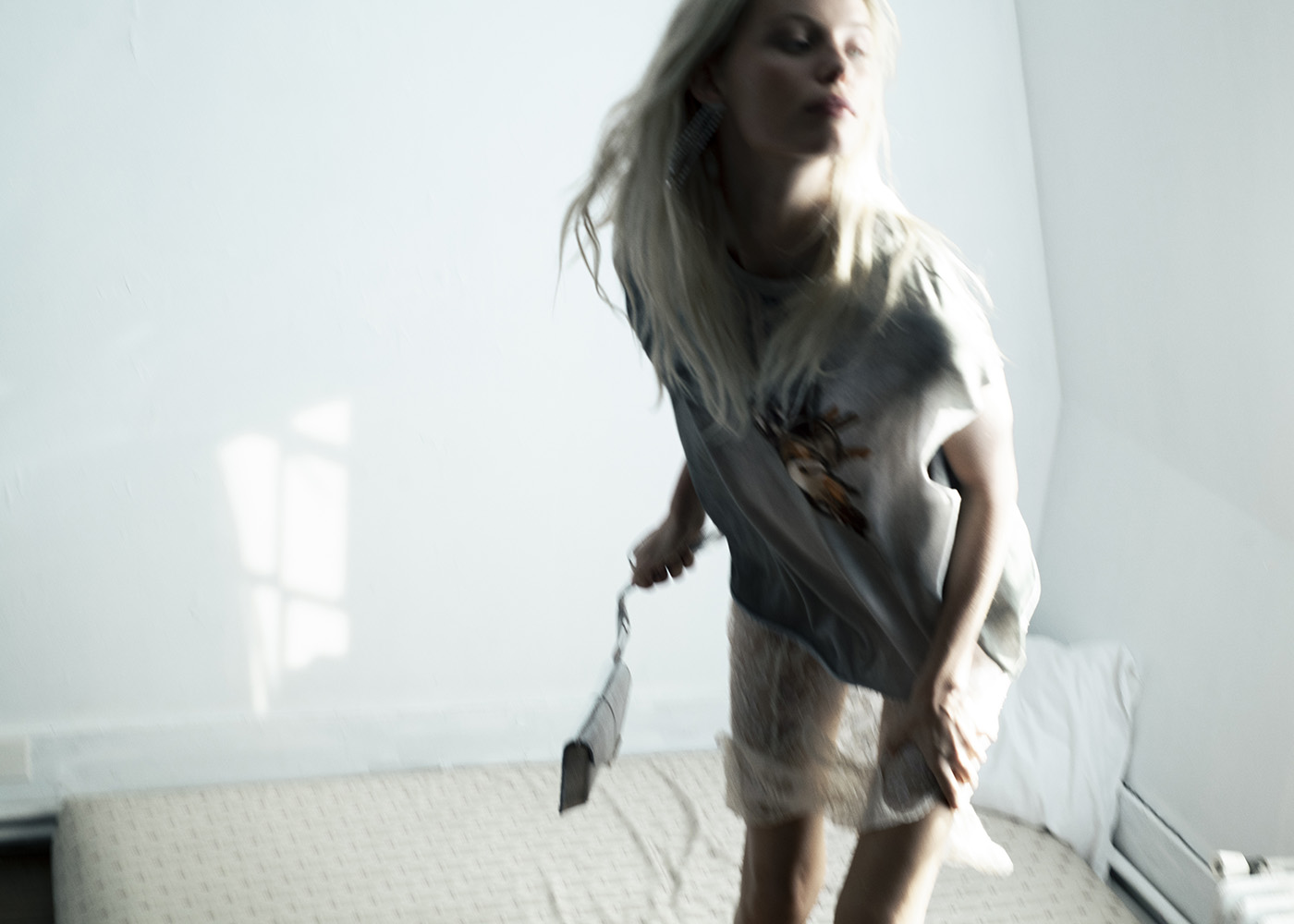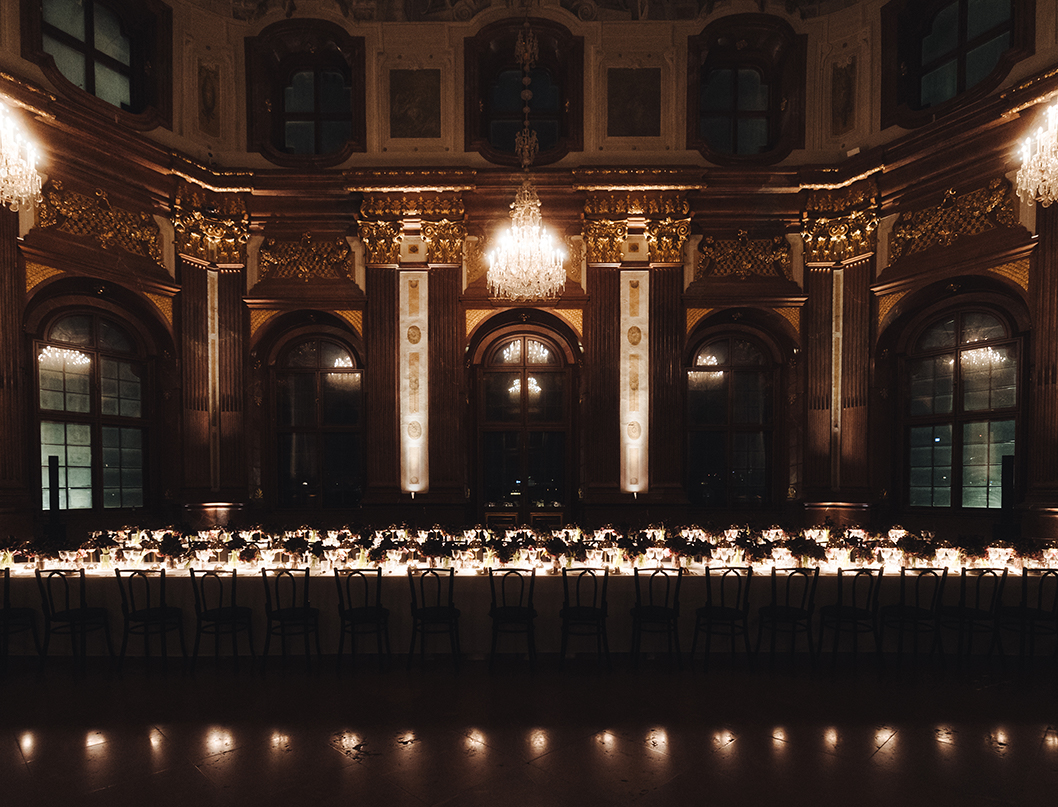Indie Sleaze Reimagined
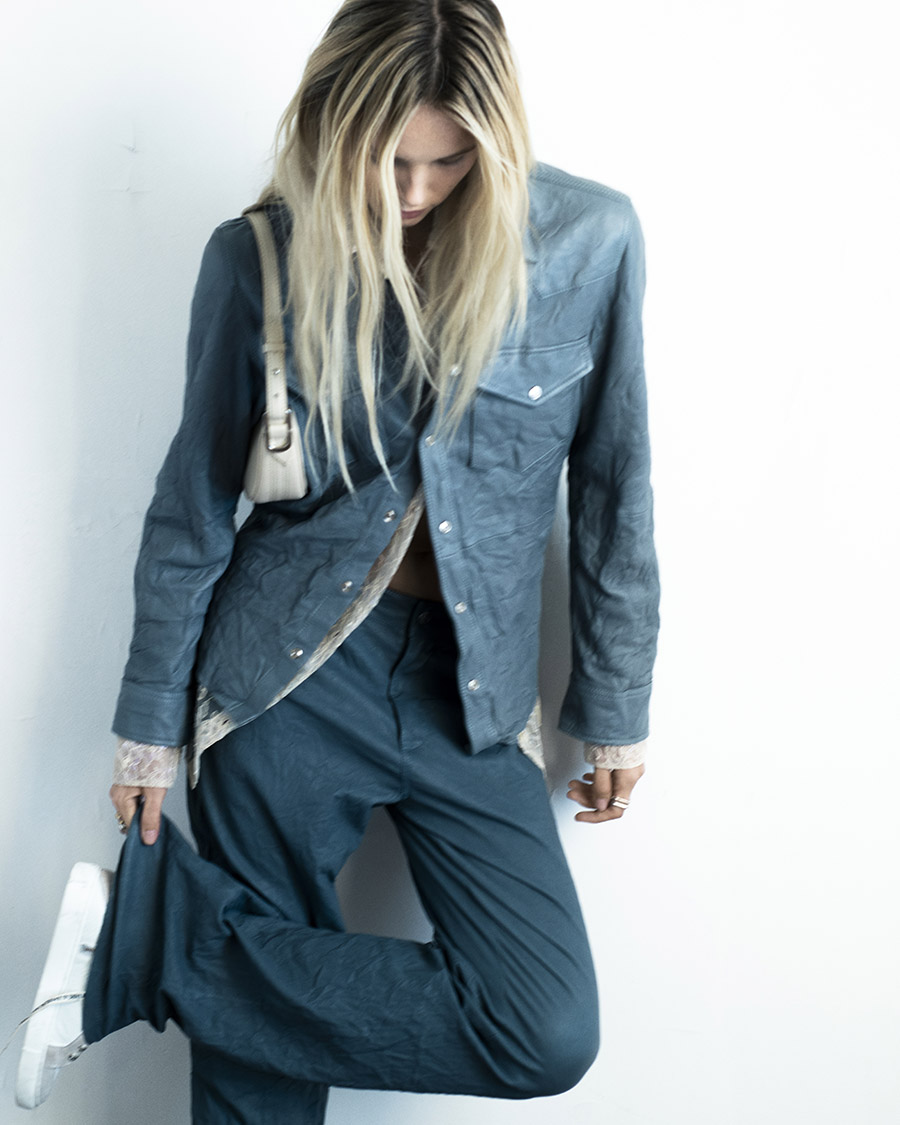
Indie Sleaze Reimagined
Zadig&Voltaire’s Spring/Summer 2024 Collection: A Look at Fashion’s Edgy New Vanguard
Zadig & Voltaire, an eminent brand that epitomizes the Parisian effortless luxury, constantly introduces unconventional wardrobe proposals to the world of fashion. Carrying on with its establishing rebellious and vanguard DNA, Zadig & Voltaire recently launched its Spring/Summer 2024 collection, boldly advocated the indie sleaze aesthetic. The collection, marked by a fusion of indie culture and rock ‘n’ roll swagger, signals a confident step into a realm of cutting-edge and carefree fashion approach.
Known for blending independent music scene influences with a raw, gritty edge, the spirit of indie sleaze movement is vividly reflected in Zadig & Voltaire’s latest design. Featuring relaxed silhouettes, adventurous textures, and a variety of eclectic prints, the collection stands as a celebration of disobedience, self-expression and individualism.
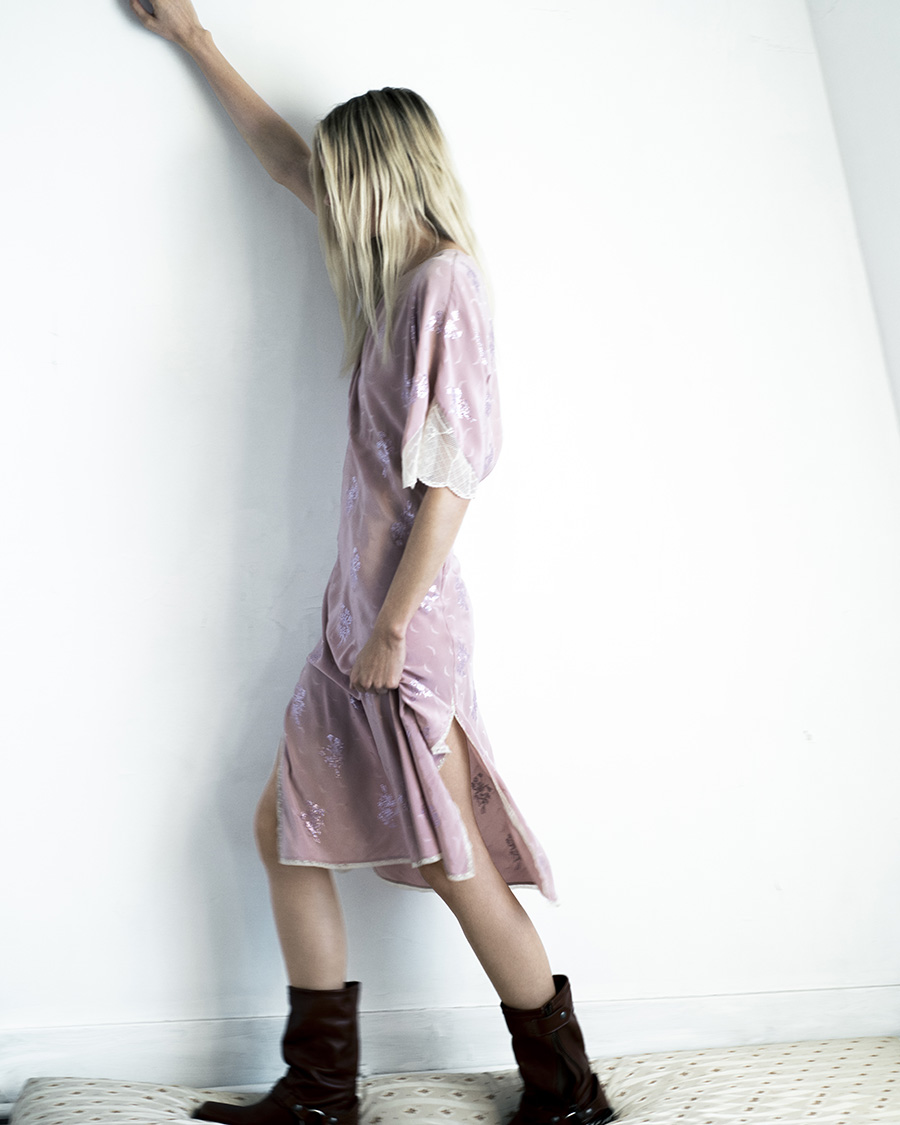

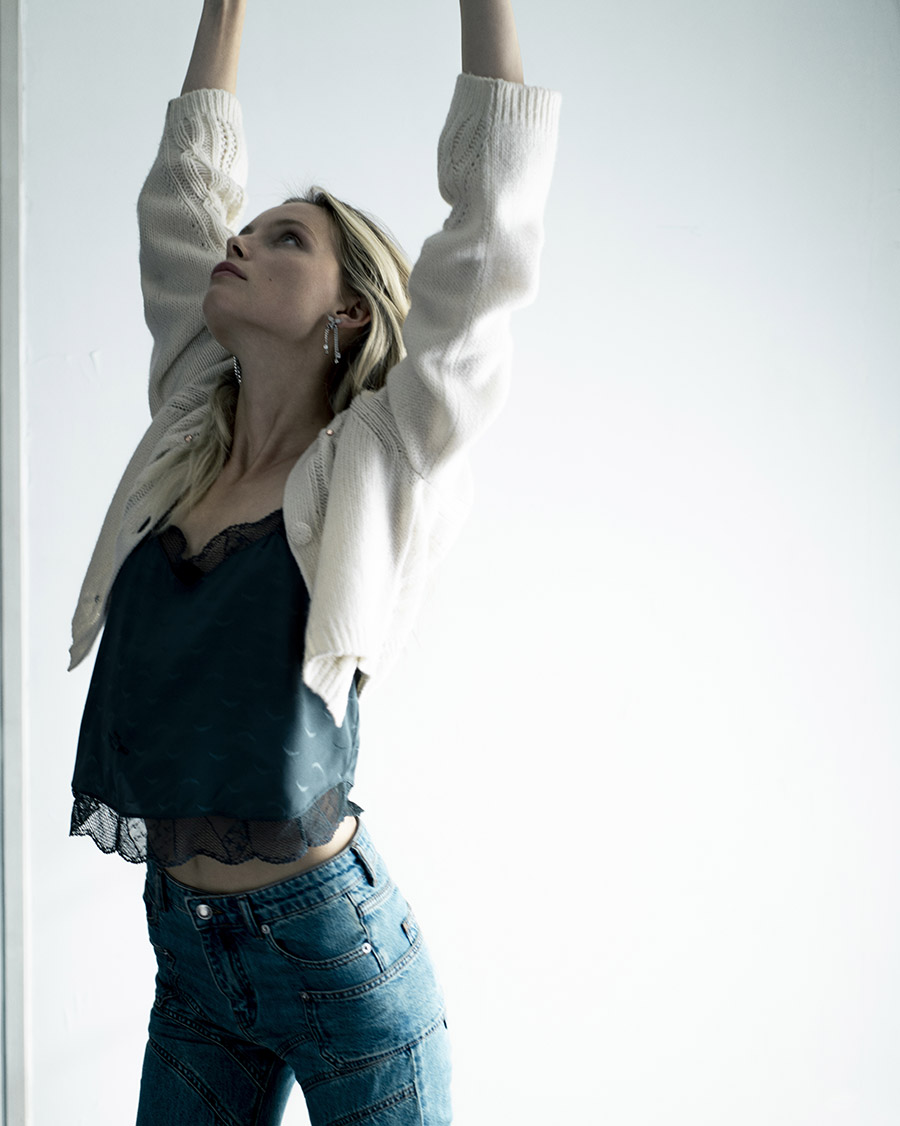
To visualize the collection’s core essence, Zadig & Voltaire invited renowned photographer Adam Peter and stylist Alex Carl for the campaign. The two outstanding talents teamed up, capturing a series of compelling images. The raw, grungy and unpolished energy of indie sleaze were conveyed through these fascinating images by Adam Peter, emphasizing the rebellious charm and unapologetic poise of each garment. Carl’s styling brings a contemporary sharpness to the table, ensuring each piece resonates as a symbol of modern defiance.
Zadig & Voltaire’s message of the latest season is unequivocal: it’s an invitation to fashion aficionados to step away from the mainstream and delve into the wild charm of indie sleaze. The Spring/Summer 2024 collection not only showcases the brand’s dedication to innovation, but also reaffirms its influence and endeavor in shaping modern fashion narratives.
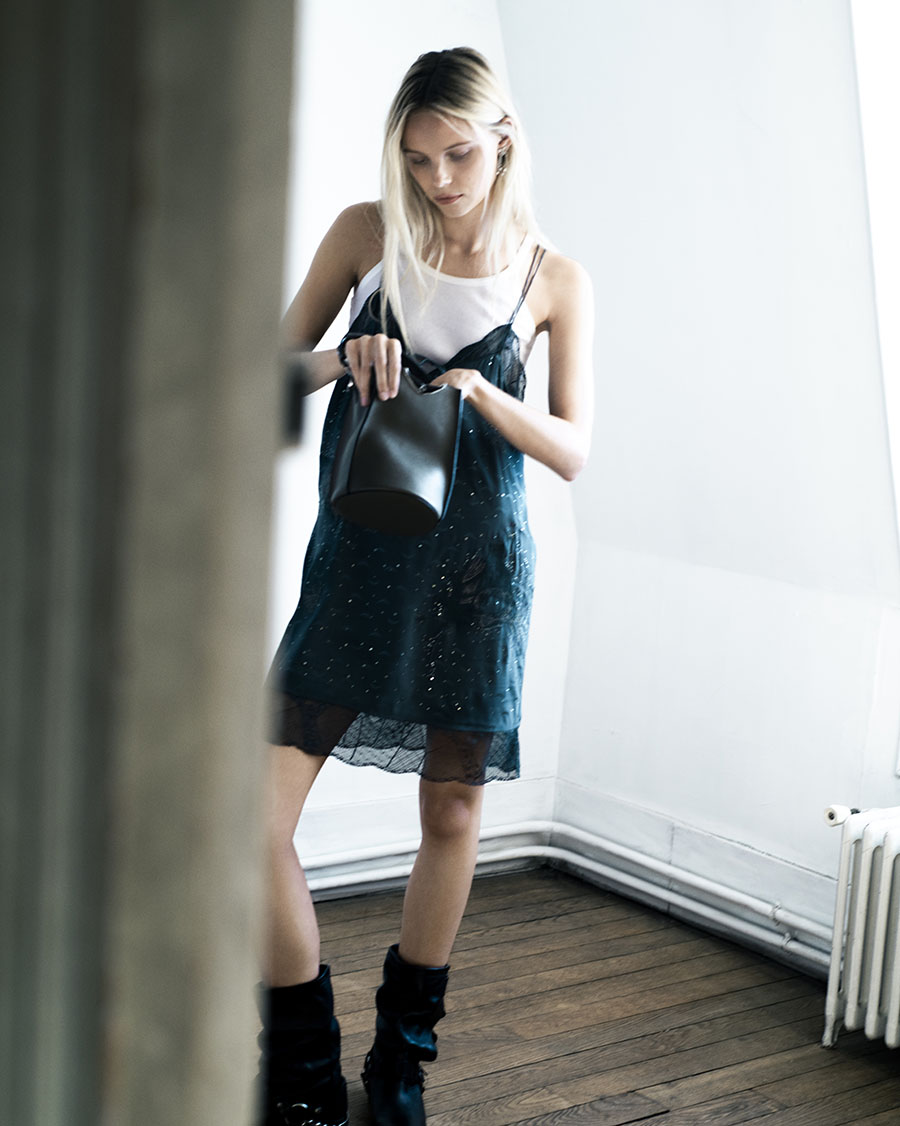
Schiaparelli’s New Artistic Collaboration : Venus Inspired Bronze Furniture
Schiaparelli’s New Artistic Collaboration : Venus Inspired Bronze Furniture
Schiaparelli’s creative director presents a suite of bronze furniture made in collaboration with artist F Taylor Colantonio
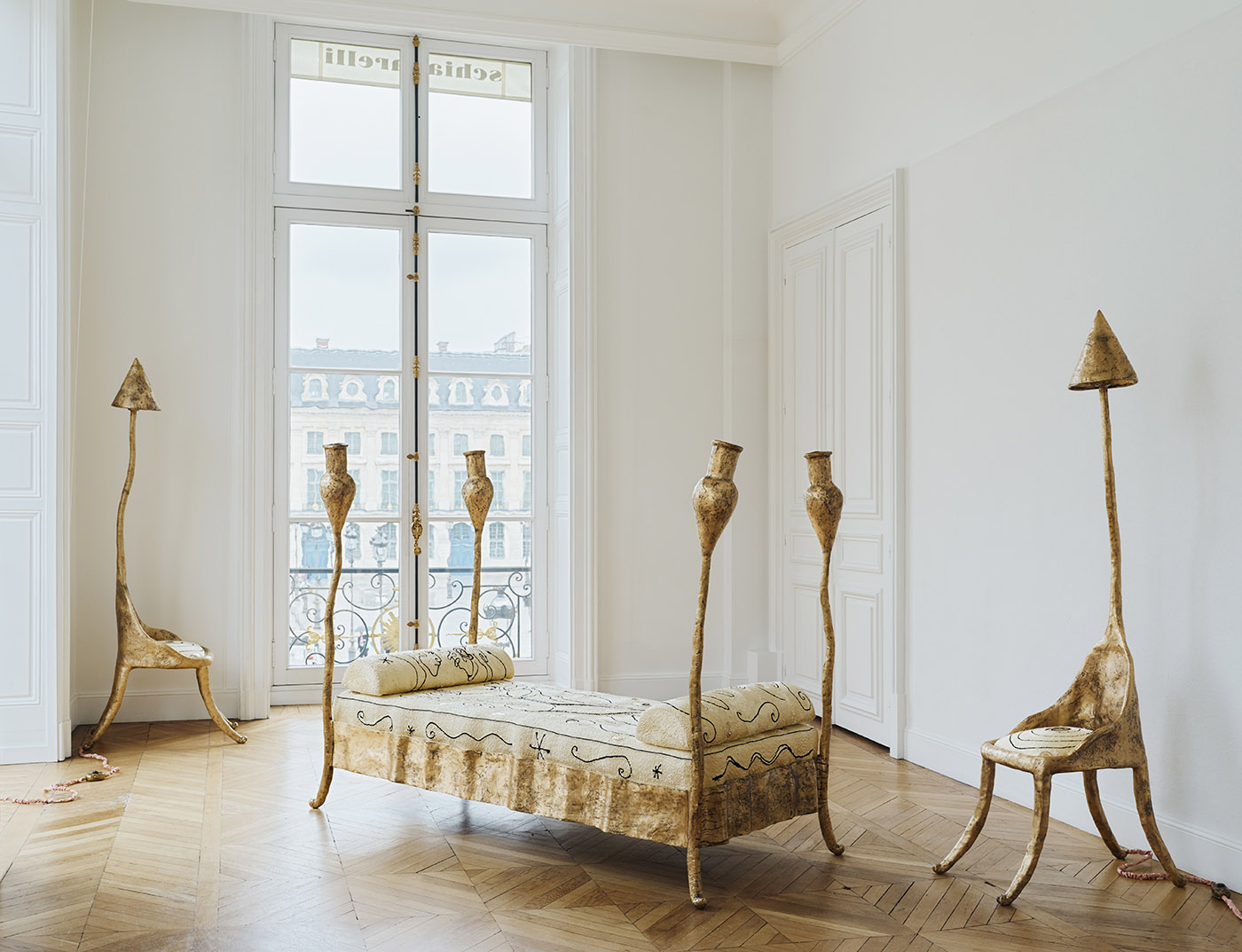
The Italian fashion designer Elsa Schiaparelli has always loved working with artists. She invited the likes of Jean Cocteau, Alberto Giacometti, Salvador Dalí, Christian Bérard and many others to create exclusive motifs and designs for her collections. Bringing their universe to the surrealist and enchanting world of the eponymous house, she launched in Paris in the 30s, she maintained close relationships to arts and design. She also imagined various collections of objects halfway between art and utility, challenging the distinctions among design, and high fashion.
Today, the American fashion designer, and creative director of Schiaparelli, Daniel Roseberry continues Elsa Schiaparelli’s legacy and interdisciplinary tradition by presenting a new artistic collaboration with the American designer F Taylor Colantonio. Together, Roseberry and Colantonio imagined a suite of sculptural bronze furniture, upholstered in silk embroideries. “I loved working with F Taylor Colantonio, whose work I have been admiring for years, to create something out of our common interests for mythology and a certain theatricality that still bears the Schiaparelli imprint,” explained the creative director.
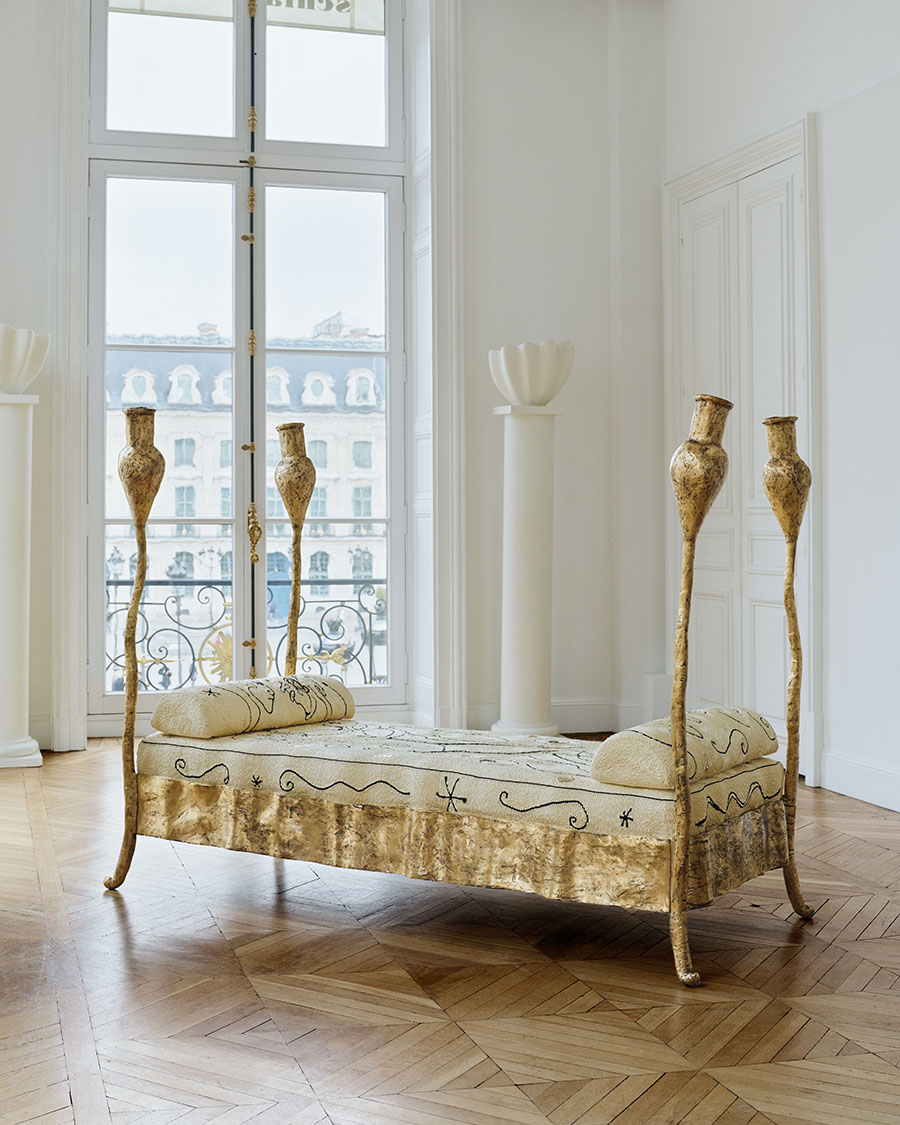
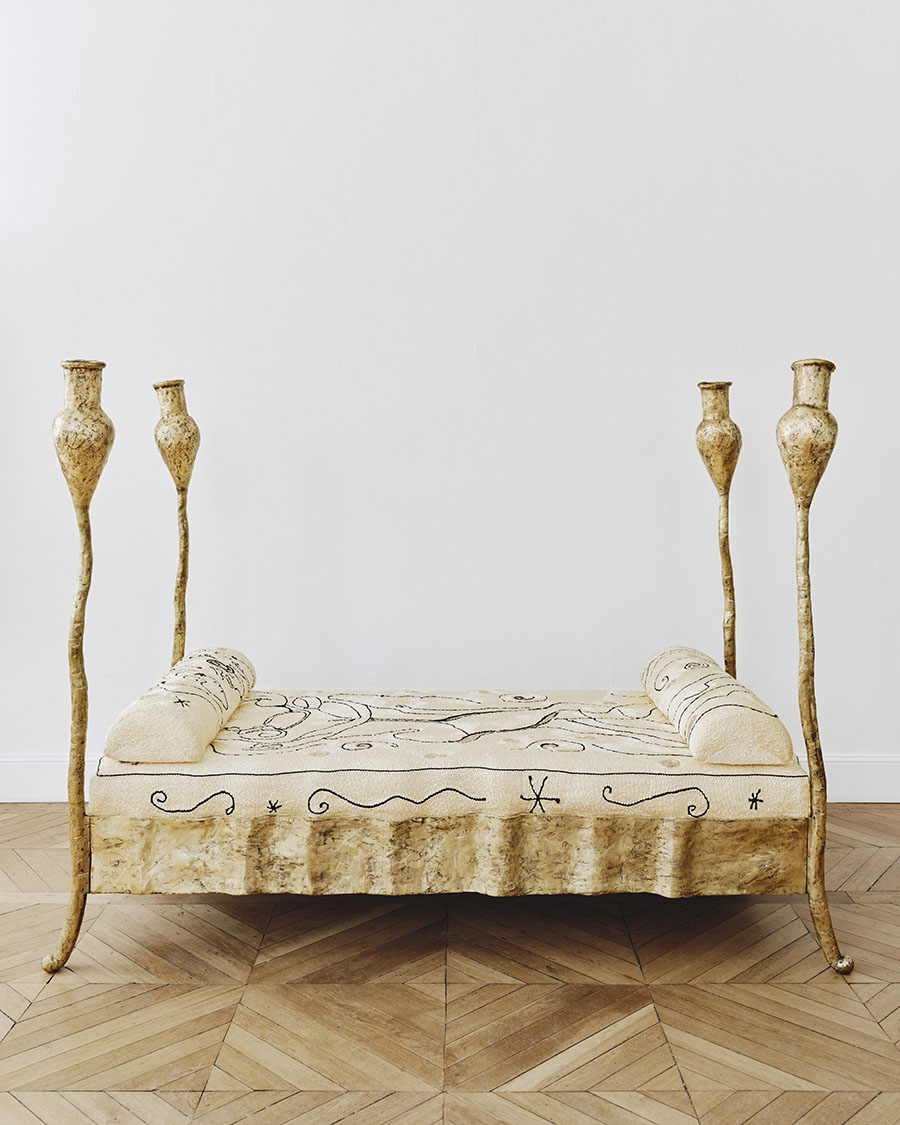
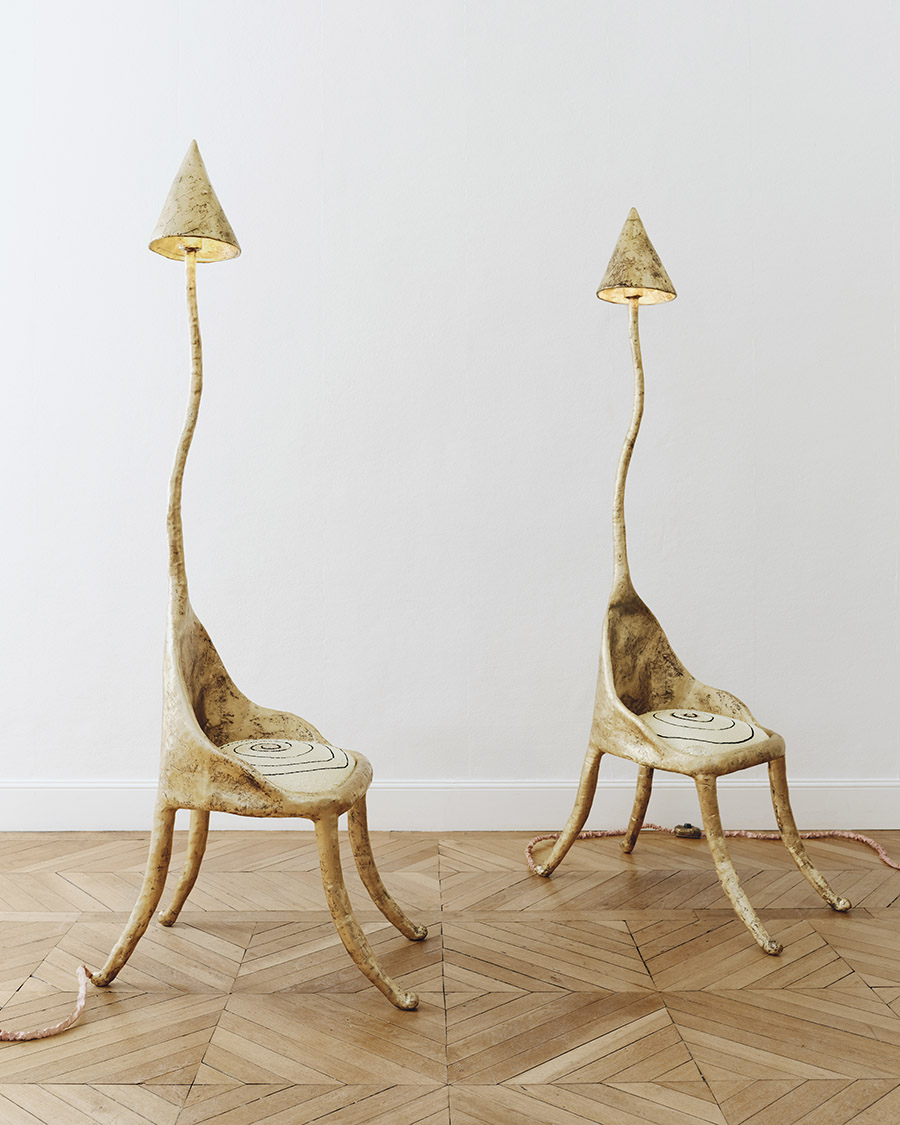
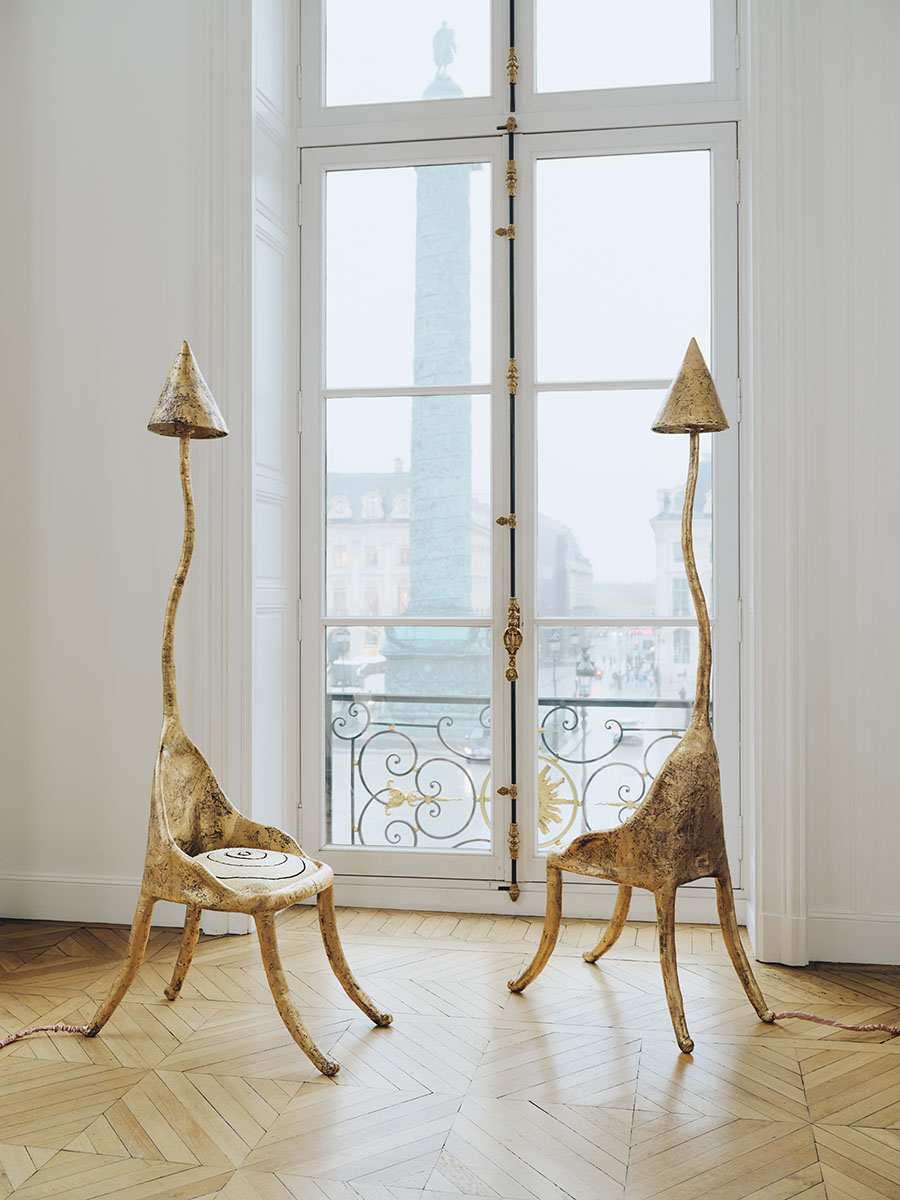
Bringing Colantonio’s universe to the one of Schiaparelli, the pair created an ensemble inspired by the ‘Toilet of Venus’ motif— a neoclassical artistic theme showcasing the goddess Venus in her celestial bedchamber. The embroideries are designed by Daniel Roseberry himself and made by hand in corded silk with gilded leather appliqués at the Schiaparelli atelier in Paris. The pieces are made in raw bronze in Italy using the ancient lost-wax technique and are produced to order in a numbered edition of only 8 pieces.
The pieces can be viewed by appointment in Paris, in the salons of Schiaparelli, on the third floor of 21, Place Vendôme.
Text: Anna Prudhomme
YENTSÉ: A Contemporary Research on Timeless Beauty
YENTSÉ
A Contemporary Researchon Timeless Beauty
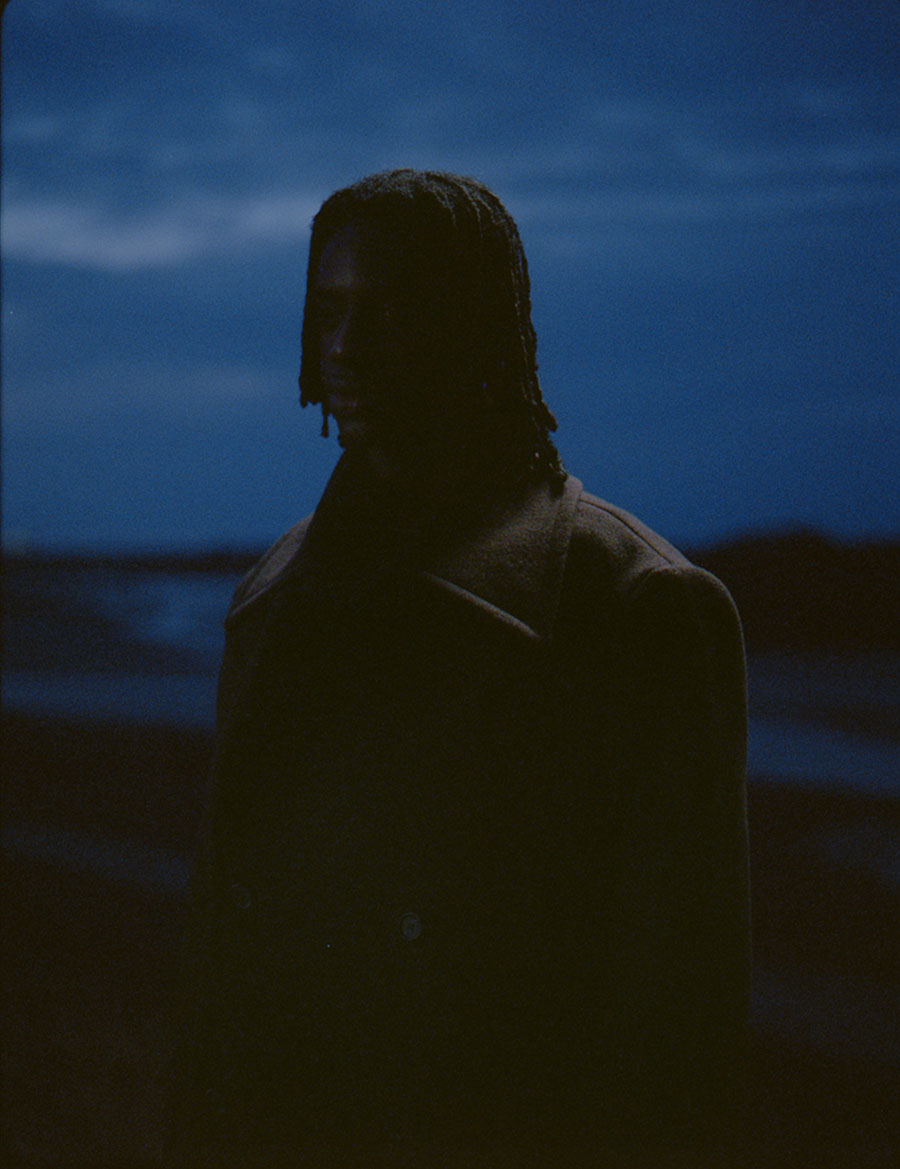
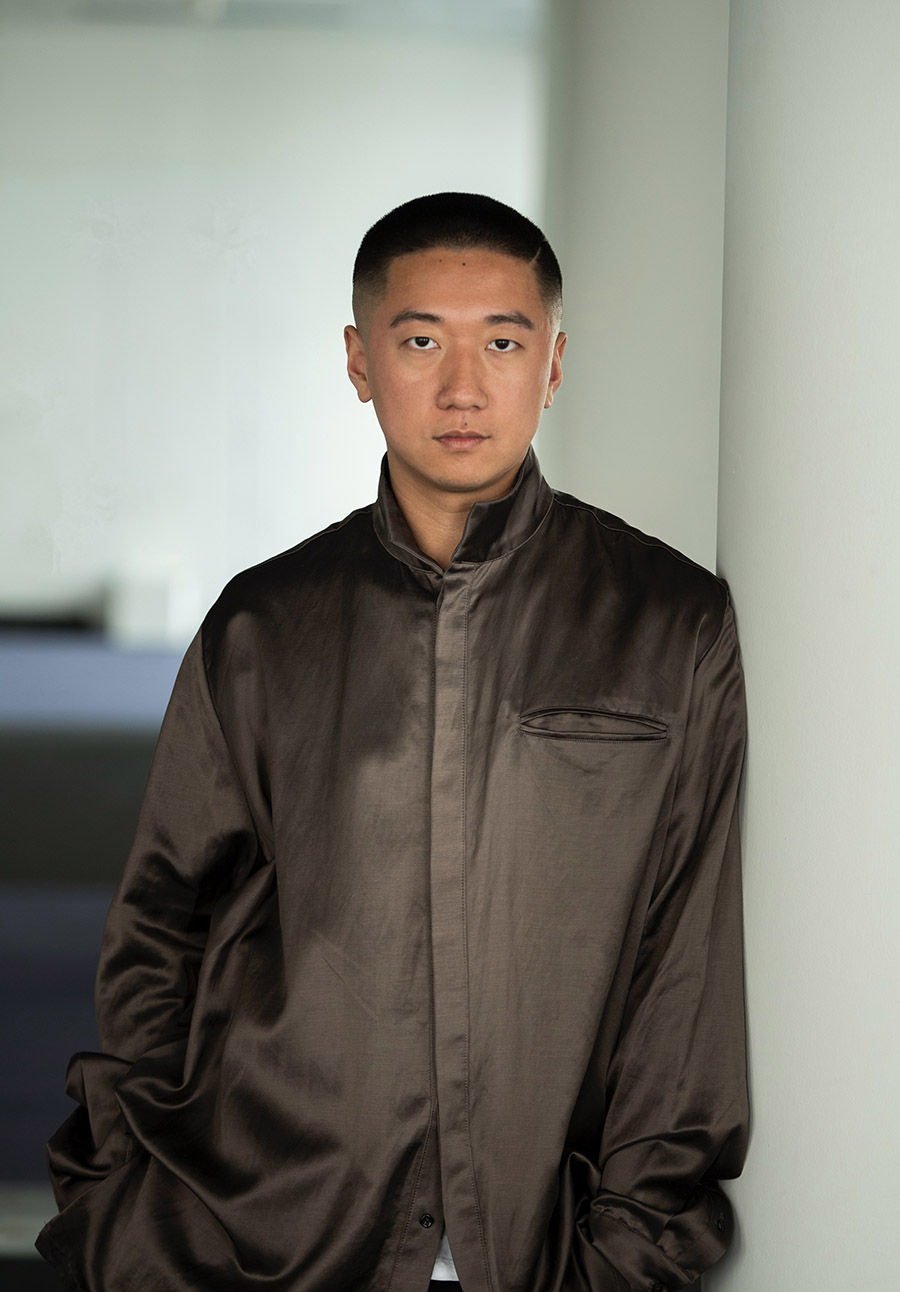
Hi, Yanze, How are you today?
I am brilliant, thank you.
Could you introduce yourself a little bit?
Sure! I am Jin Yenze, a fashion designer based in Antwerp, Belgium. I came from Xian, China. Before coming to Antwerp, I’ve studied fashion design in Wuhan Textile University in China and worked as a fashion assistant in Haaper’s Bazaar China.
When did you arrived in Antwerp, and what inspired your relocation?
I arrived in Antwerp in 2015, it has been almost eight years now. After graduating from my bachelor degree in fashion design, an idea of study abroad started to burgeon. When it comes to fashion, Europe is pretty much the place to be. So, I applied to London’s Central Saint Martins and Antwerp’s’ Royal Academy of Fine Arts. Luckily, I received offers from both, so the discretion is on me then. To attend the admission exam of Royal Academy of Fine Arts, I have to physically be in Antwerp. I took the chance to explore the city a bit, a mysterious and unknown place for me back then. I found myself quite enjoy the ambient of the city, hence I decided to accept the offer from Royal Academy of Fine Arts and moved to Antwerp later on.
According to you, what has Antwerp brought to you, and how has this city shaped you into who you are today?
Overall, my academy and life experience in Antwerp has helped me become more certain about what I want in my design. Through the solid training, I became more determined in my design direction. The research environment here is pretty liberal, you are allowed to explore the field you wanted to delve into, in the way you like it to be. Without much restriction, Antwerp provides me with more confidence and resources to research on something more underground and niche.
Also, I really like the atmosphere of the city. It’s not a massive metropolitan, but a well-developed city with elegance and chic. Because it’s not big and chaotic enough, I could really maximize my time to contemplate on my design and focus on the things I would like to do. That’s why I decided to stay here and create my own brand YENTSÉ.
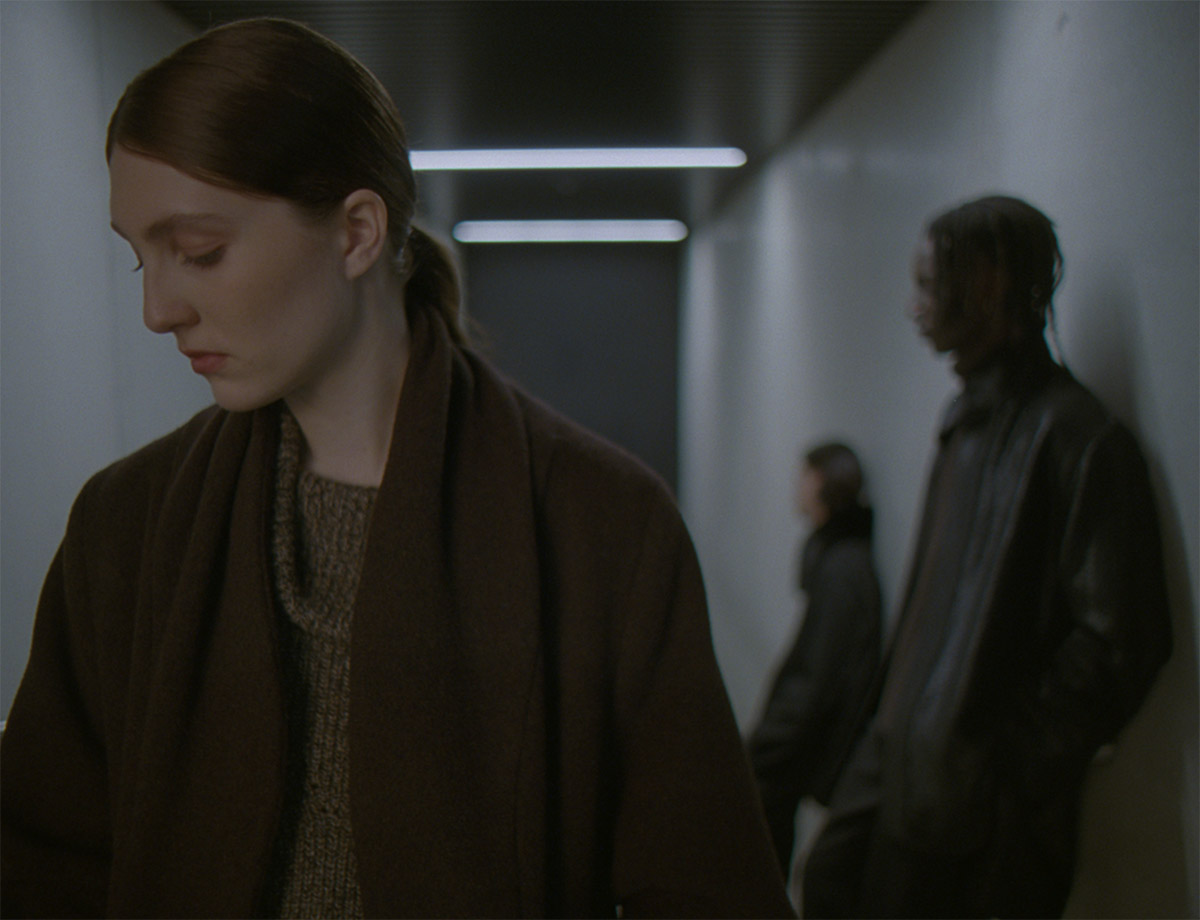
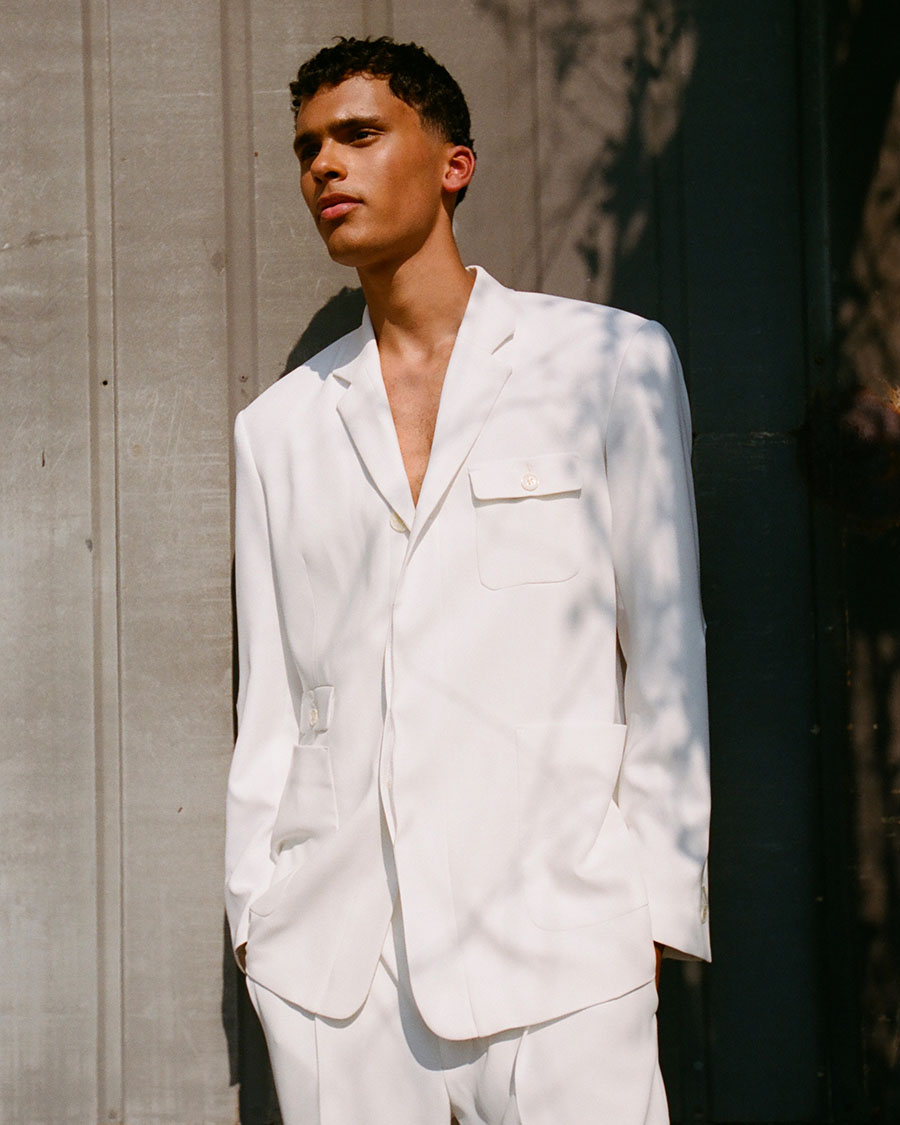
Now let’s talk about your design. First thing I am interested to know is, where do you usually get your inspiration from?
My inspiration came from various sources. Sometimes it could be a person – an artist for example – the creation background behind a particular artwork or in his or her artistic career in general. Other times, it might stem from a sentence I came across while reading, which leads me to delve deeper into a concept; or photographic works that pique my interest. Normally, my inspiration starts from a small point, and gradually develops into a concept before expanding into a more concrete and complete plan, in which I consider about the silhouette, the colors, the details and so on.
Going through your design, it seems like cut and tailoring play a big part. Would you say that these are the elements that you value the most?
I would say so! Regardless of the type of garment you design, the principle that need to be understood is the way it looks on human body. For this reason, cut and tailoring are crucial. Cut is related to patterns making, which is essential because it matters whether the clothes will fit the body. Tailoring, on the other hand, focuses on the techniques and finishing used in design. I always prefer to start with the pattern, ensuring the fit is well on the body. Afterward, I select suitable fabrics and techniques to achieve the desired finish. I hope my design looks already like an artwork when it is hanged there and is not beautiful only after it is on human body.
It seems like the importance of cut and tailoring is dwindling in recent years. What are your thoughts on this phenomenon?
This question is pretty precise, and it is exactly the situation I am facing right now – to create a clout or to stick to true craftsmanship. The designers that create top-selling “it products” nowadays have acuity in trend and acumen in marketing, but for me, their design language is somehow too direct and simple. As a person who loves clothing, I am willing to invest more time on researching the construction, silhouette and details of a garment.
Of course, from the business side, I need to design some bestsellers or “it products” that could make YENTSÉ relatable; however, I would like to take time and contemplate on how to combine my passion for research and love for craftsmanship with the intention of designing something that could create a clout.
Do you more or less have an idea on how to achieve this goal?
What I’m thinking is now is the concept of a “top-selling it product” might depend on how we interpret it. From my perspective, an “it product” for YENTSÉ could be a pair of pants or a jacket, in which the cut and tailoring techniques are something I develop after my research. This unique piece is not an ephemeral happening, not something you will throw away after a season or two, but something that could still be worn after years. Overall, it will be that piece that encapsulates the definition of YENTSÉ – “Contemporary tailoring with timeless aesthetics”.
What are the elements that catch your attention when you see a fashion design piece?
The first elements I will notice is the fabric and the color, because they are the most evident traits you can see. Then, I will observe its cut and tailoring. Finally, I will scrutinize its details, and try to understand what kind of techniques the designer has used.
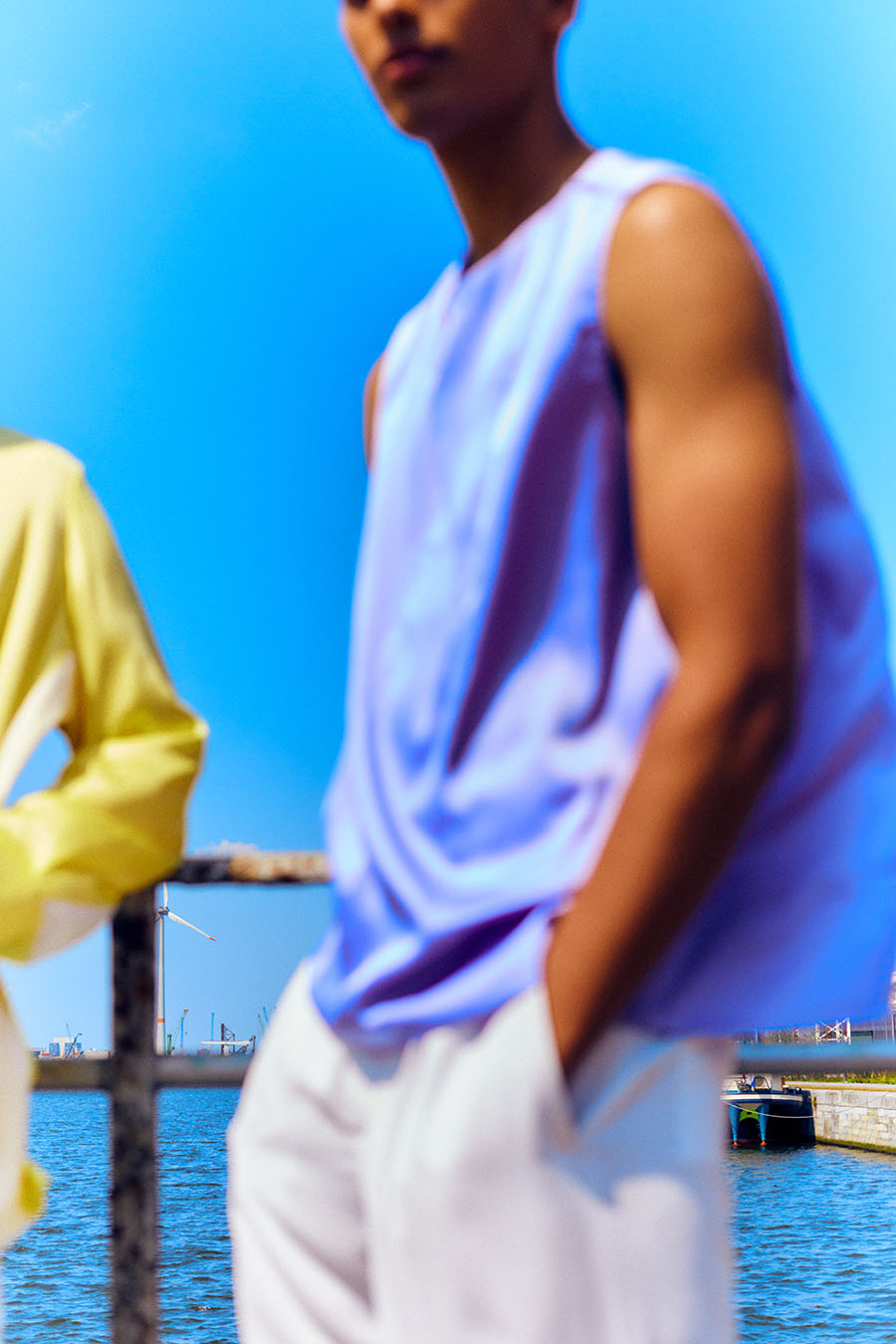
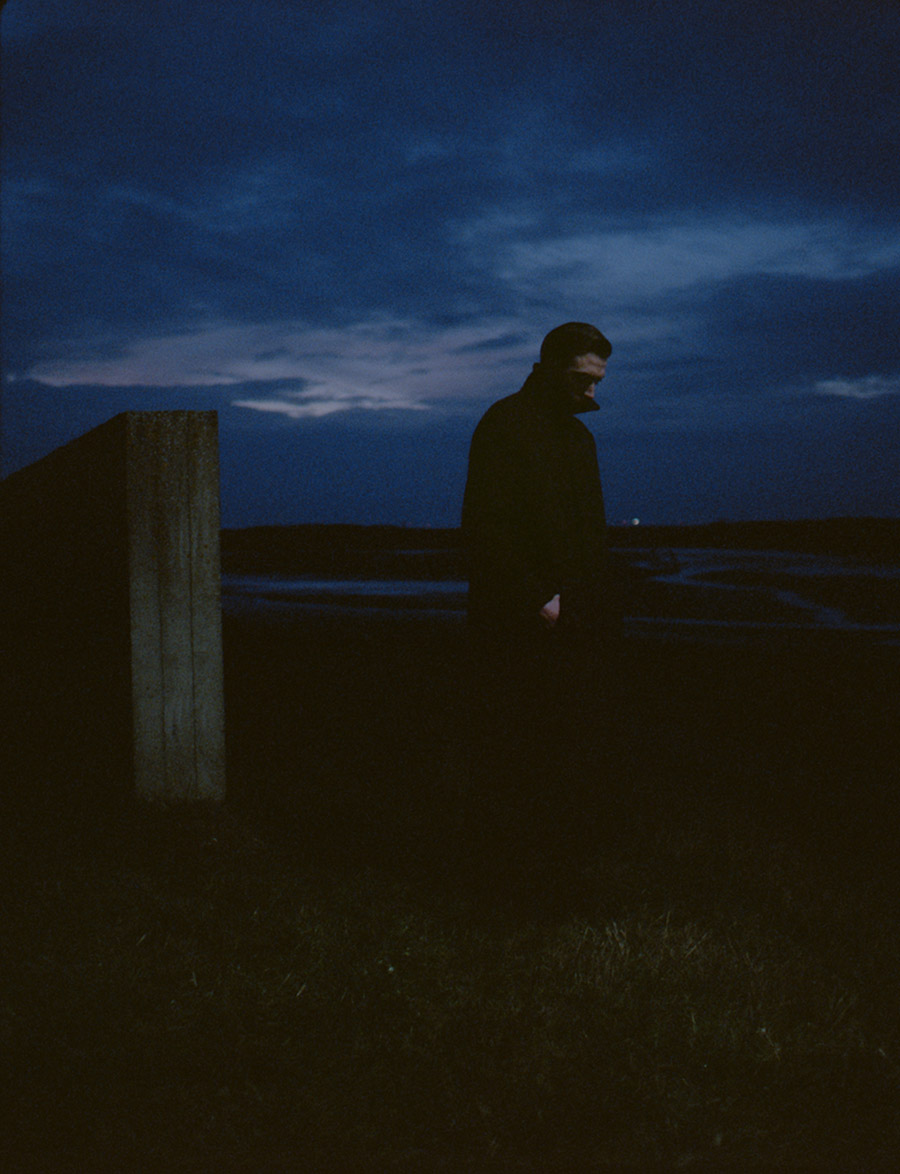
On your website, you mention about the sustainability development that you are focusing on. What are your sustainable initiatives, and are how do you practice them?
I believe that besides the topics everyone discusses, such as the use of upcycled or recycled fabrics and materials, as well as minimizing carbon footprint in logistics and shipments, there’s something more to consider. For a small and nascent brand like us, YENTSÉ has to plan every step of our sustainability practice early on. For example, we collaborate with a world-renowned brand, Scabal, on the collection and upcycle of fabric scraps and deadstock fabrics. Scabal is a London-based cloth merchant using luxury fabrics on their made-to-measure suits, and the quality of their fabrics are top-notch. For the fabric scraps, we would use them for the accessories or the details of a garment. As for the deadstock fabrics, since the amount is too limited to support the production of the whole main line, we would use them on unique pieces or for our capsule collection.
Thank you for the interesting insight! Before wrapping up our conversation, could you share with us your future plans?
We have just been represented by a showroom in Paris and have our first season – the Spring/Summer 2024 – shown in front of the buyers from all over the world. I hope that until the end of 2024, YENTSÉ will be present in more than 15 countries, and having clients in Europe, the US, South Korea, Japan, Hong Kong and even Taiwan!
Text by Yves Tsou
A Viennese Rendez-vous: Mytheresa and Miu Miu's Holiday Gala
A Viennese Rendez-vous
Mytheresa and Miu Miu's Holiday Gala
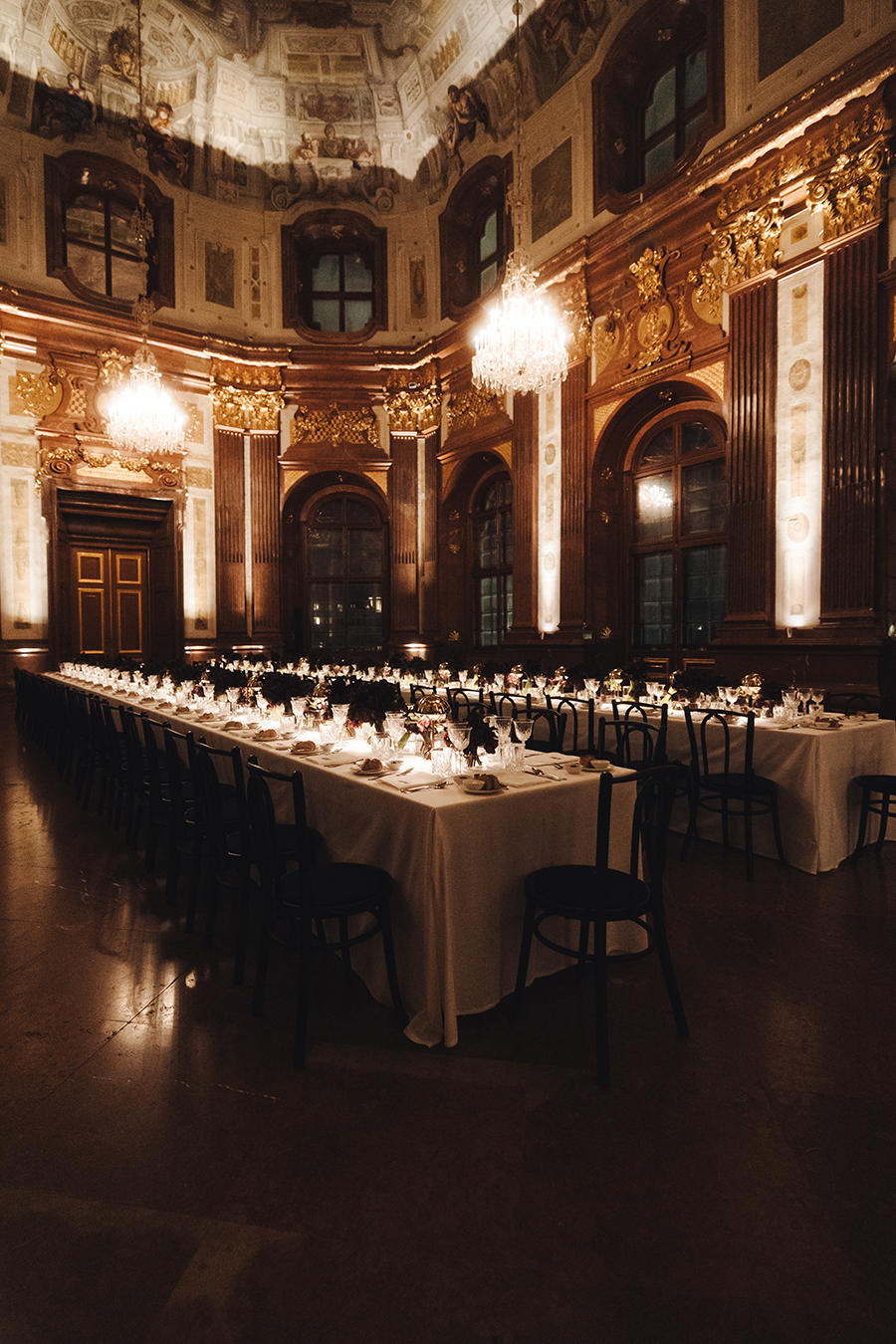
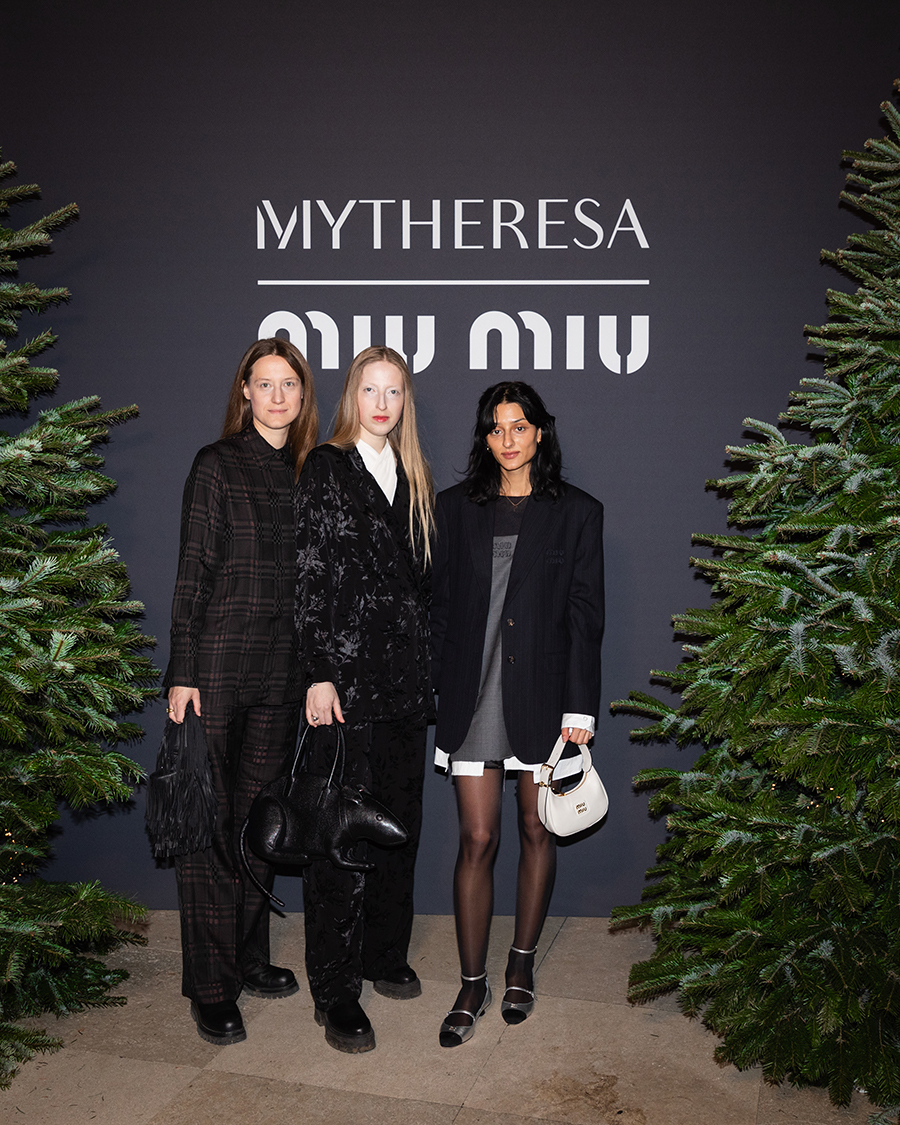
Marleen Roubik, Anouk Lamm Anouk, Sofie Royer
In the historic heart of Vienna, a city where tradition waltzes with modernity, a grand celebration unfolded. Mytheresa, in concert with the esteemed fashion brand Miu Miu, targeted by Lyst as the hottest brand of the moment, hosted a two-day event, imbued with elegance and exclusivity, to usher in the holiday season.
The experience commenced at the majestic Upper Belvedere Palace, a symbol of the imperial grandeur. Within its hallowed halls, illuminated by the warm glow of candels and embellished with dark red flowers, the guests were embraced by a tableau of sophistication. The attendees were treated to a private tour of the most extensive Gustav Klimt collection in the venerable Upper Belvedere Palace. This visual feast of Klimt’s celebrated works, set against the backdrop of Viennese historical splendor. The grandiose hall, adorned with intricate frescoes and golden embellishments, hosted a tableau where light danced off polished surfaces and shadows played along the edges, creating an atmosphere of timeless elegance. This exclusive gathering marked a beginning to the season’s celebrations.
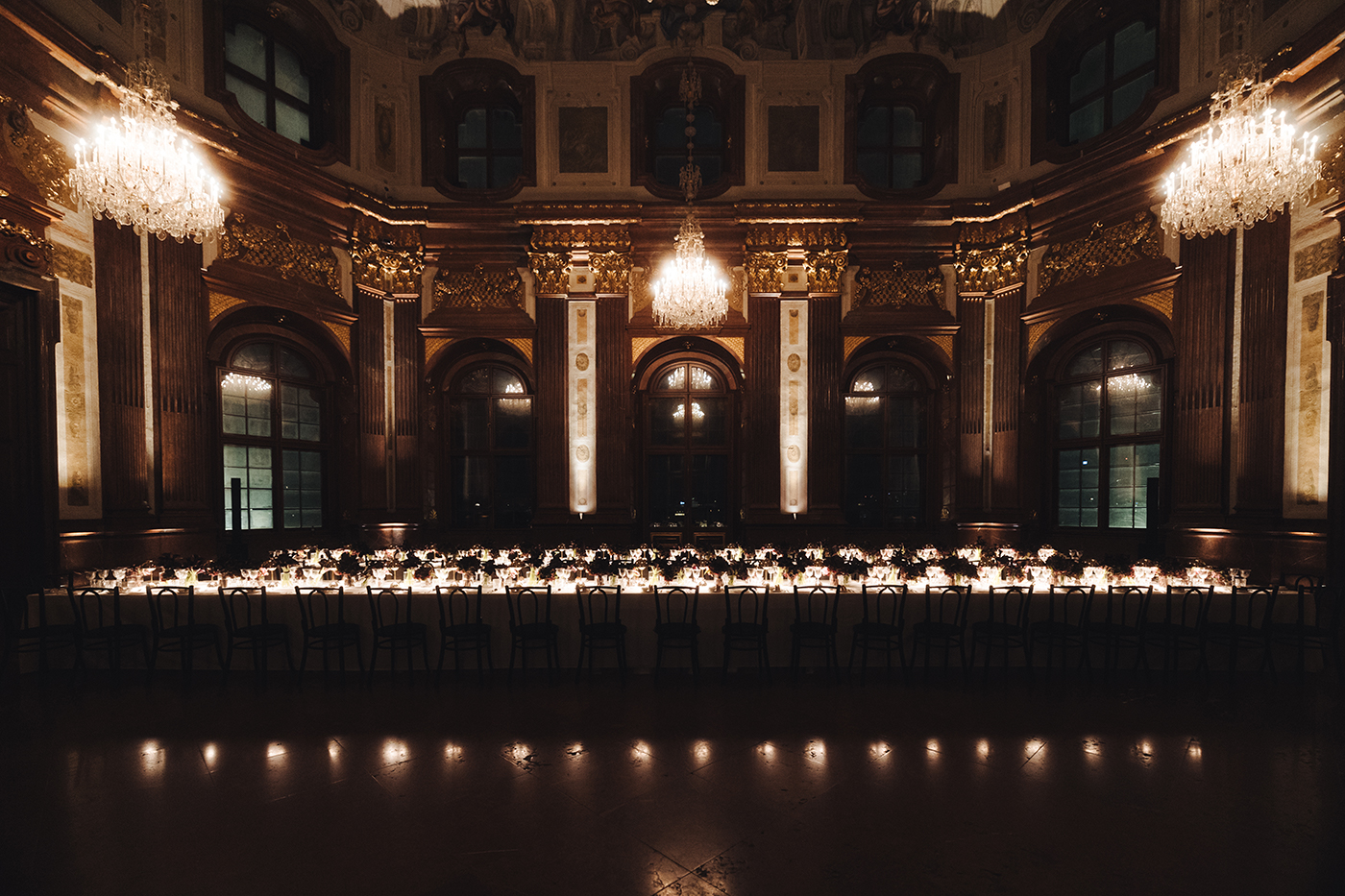
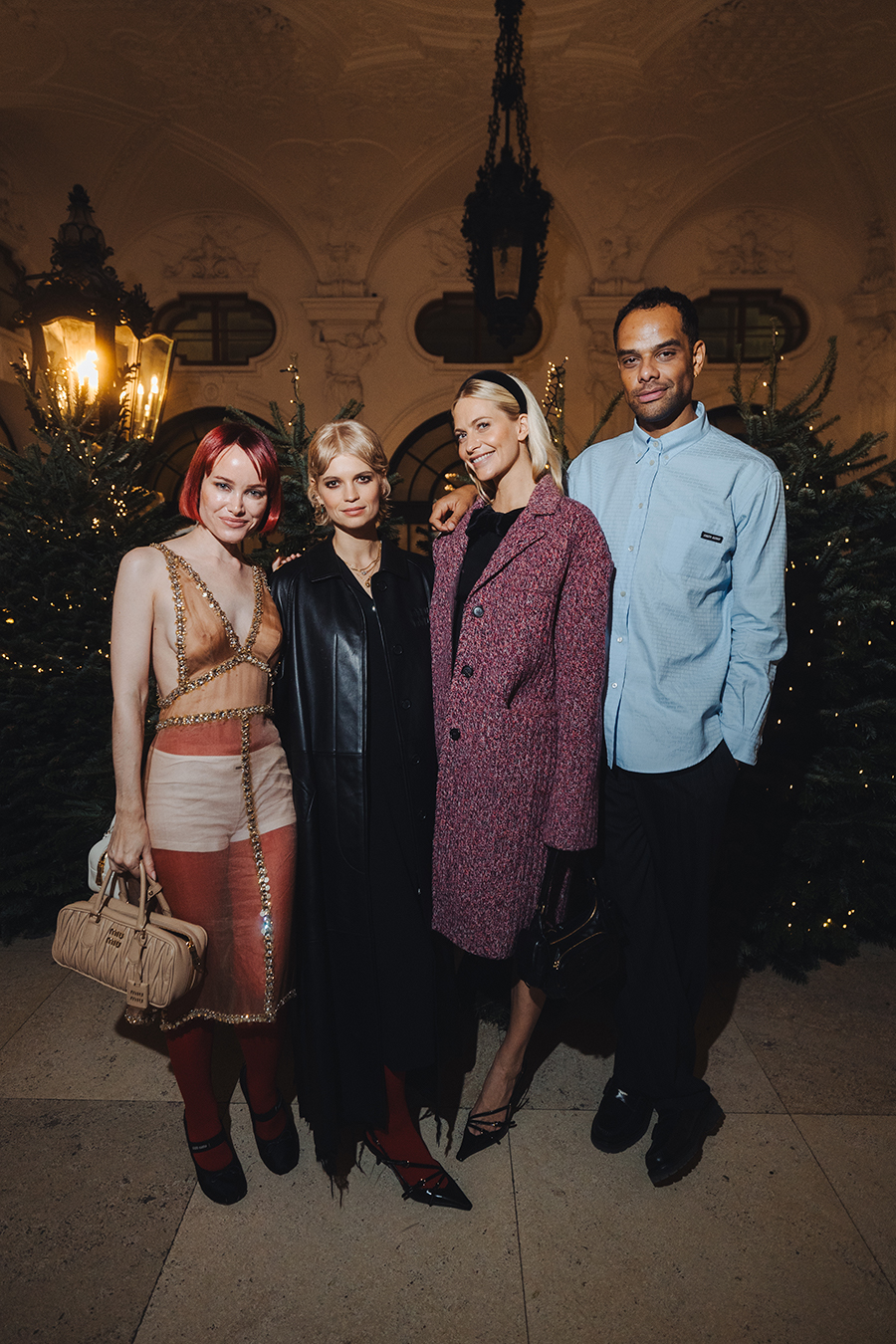
Julia Hobbs, Pixie Geldof, Poppy Delevingne, Raven Smith.
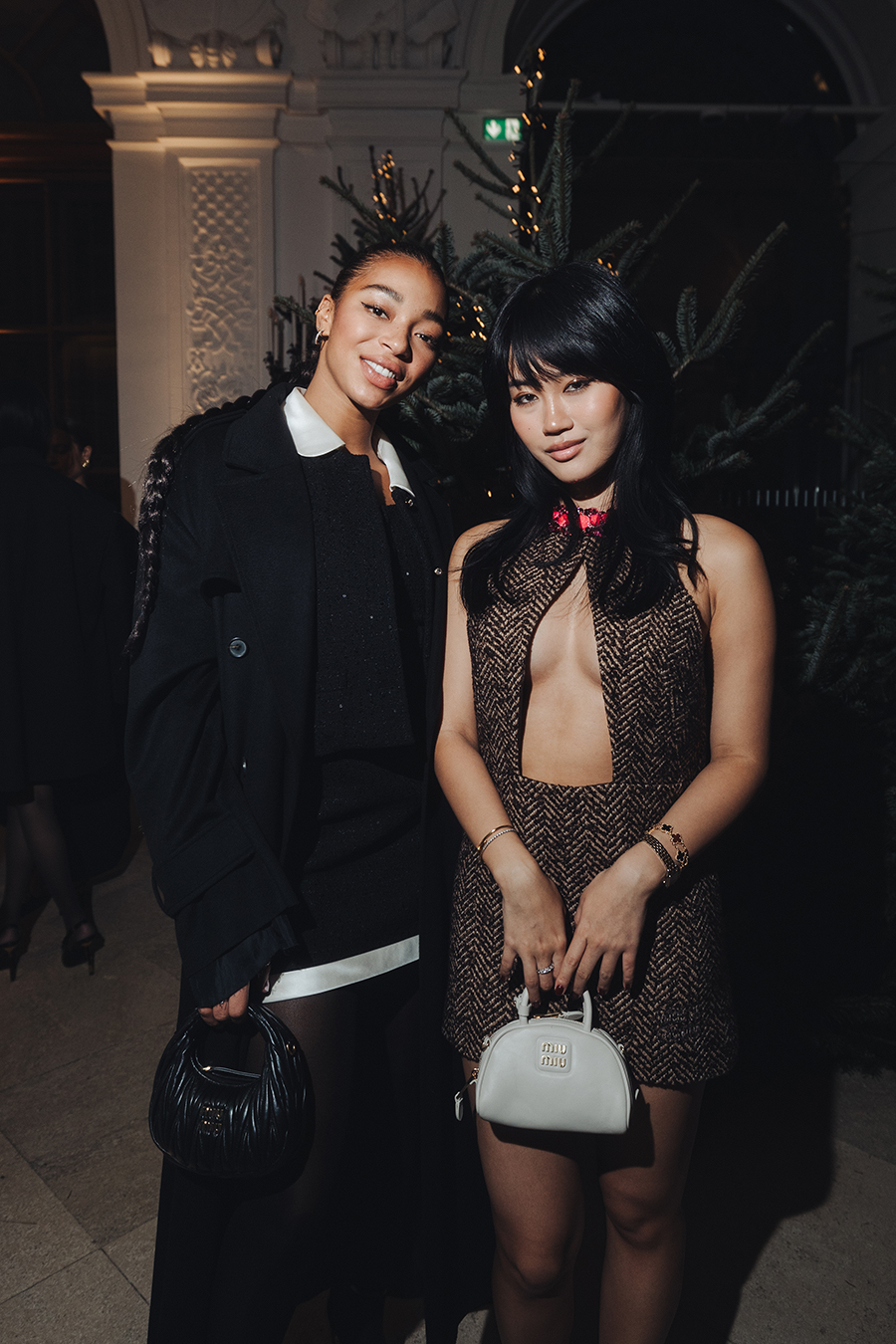
Manon Bresch, Jihoon Kim
As the night progressed, the soiree’s ambiance shifted to the dining room where culinary art awaited. Two elongated tables, arrayed in unblemished white linens, stood ready for the banquet prepared by the esteemed Chef Johannes Nuding. In this setting, guests like Poppy Delevingne, Pixie Geldof, Raven Smith and Manon Bresh, convened to savor the gastronomic masterpieces.
The juxtaposition of the room’s classical architecture with the sumptuous, modern fare created a harmonious blend of past and present. Adding a touch of whimsy to the elegant affair, celebrated stylist and cake artist Sophia Stolz presented a dazzling array of desserts, way more than just sweet treats. They were masterpieces of culinary art, delighting the senses and adding a layer of enchantment to the evening.
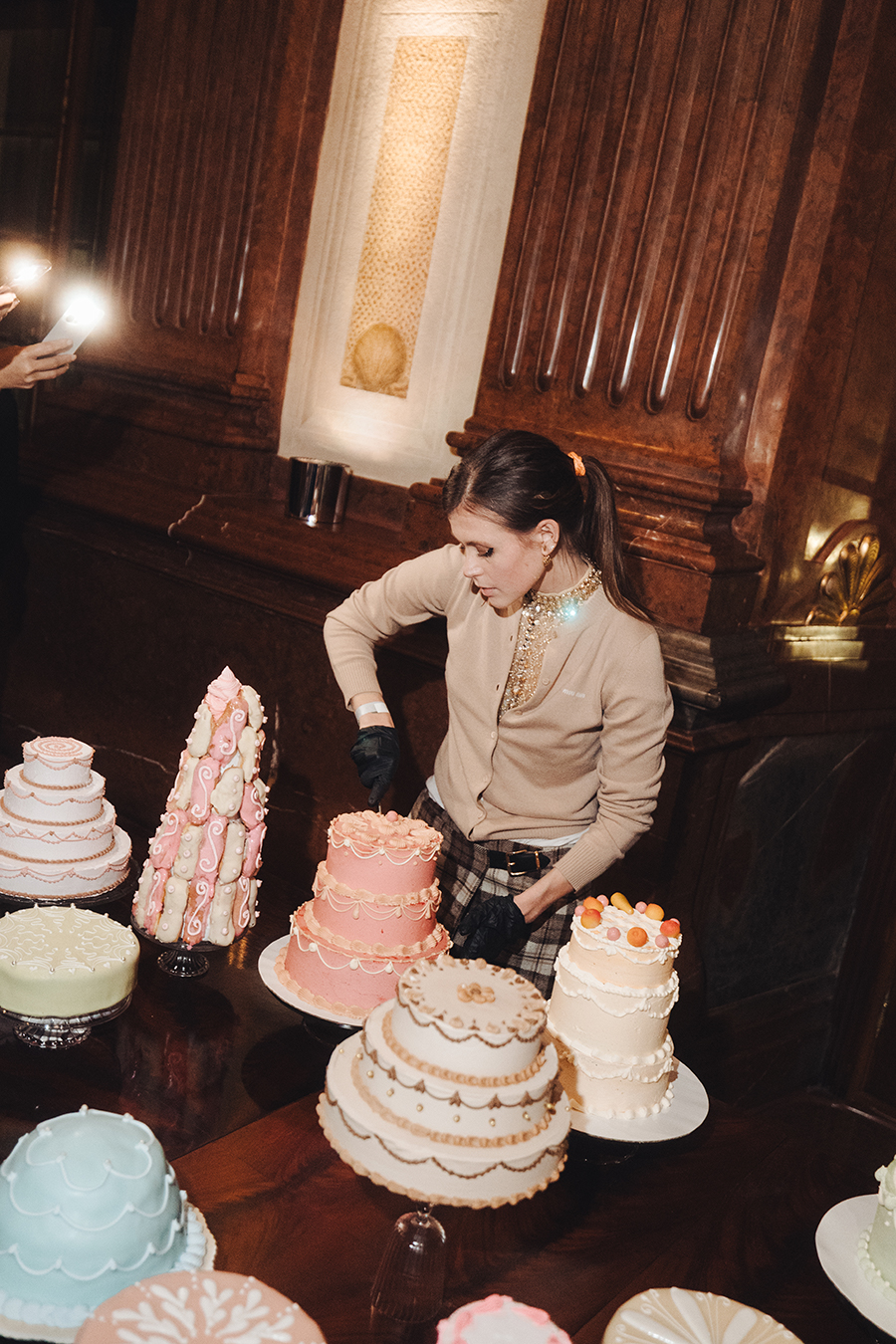
Sophia Stolz
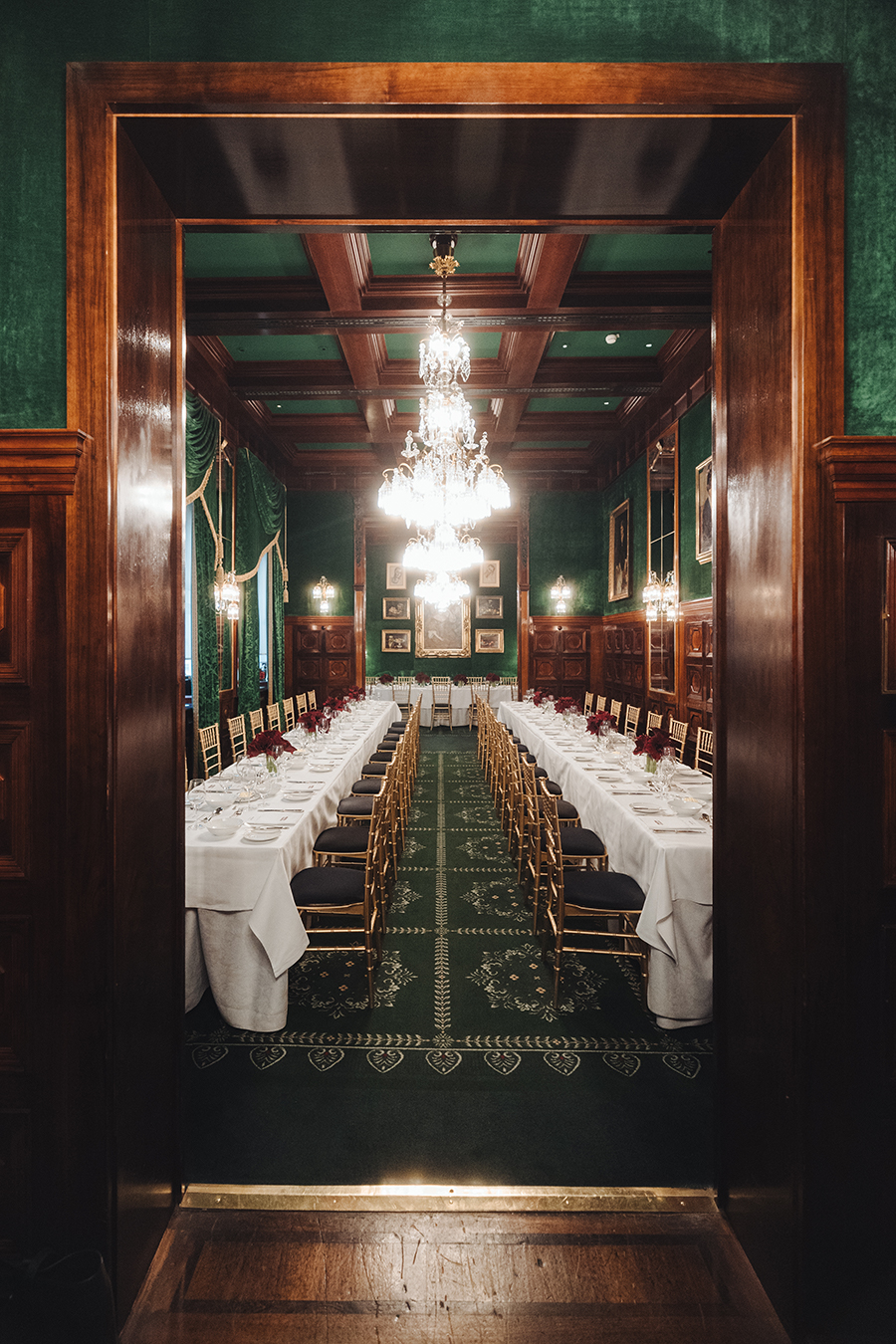
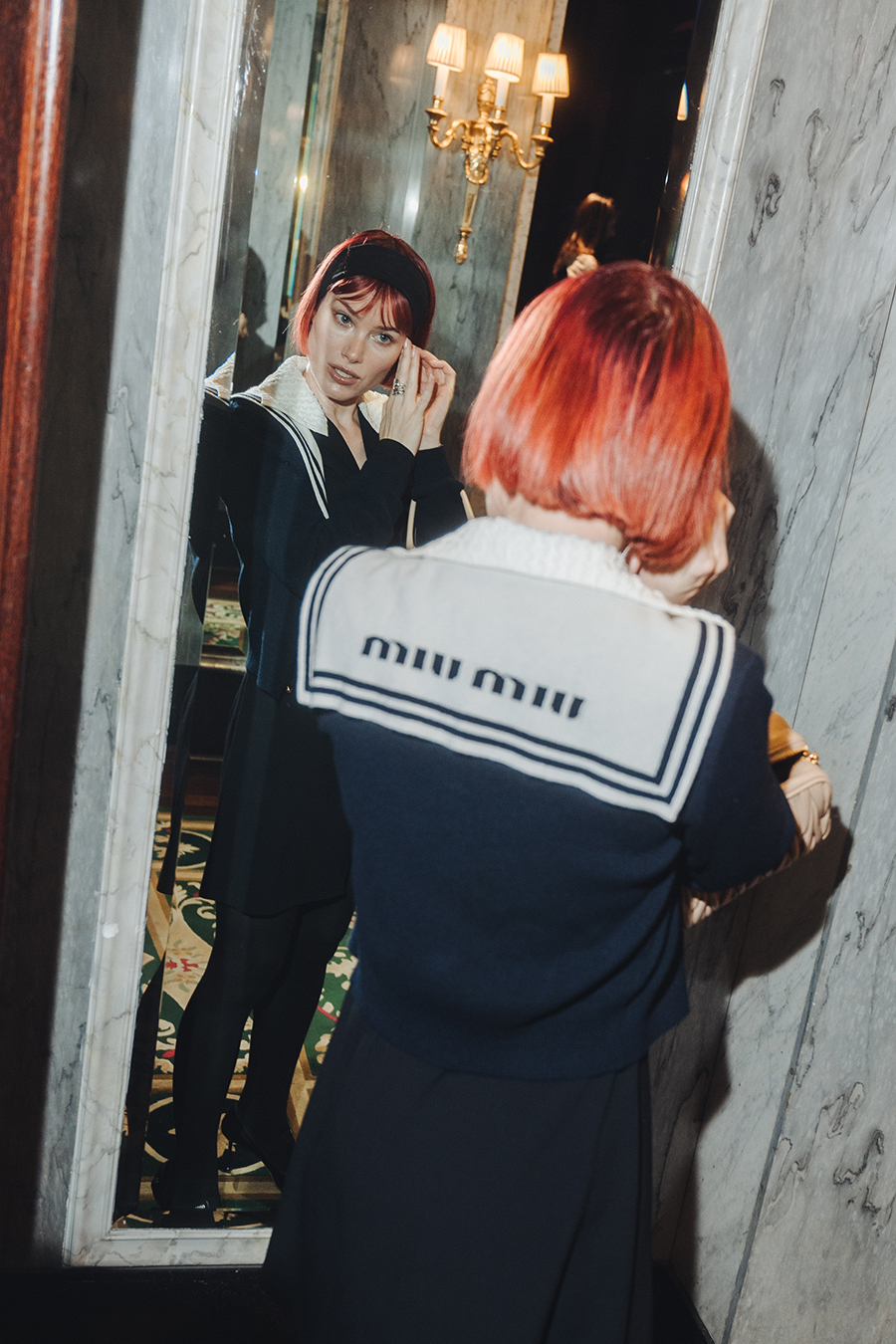
Julia Hobbs
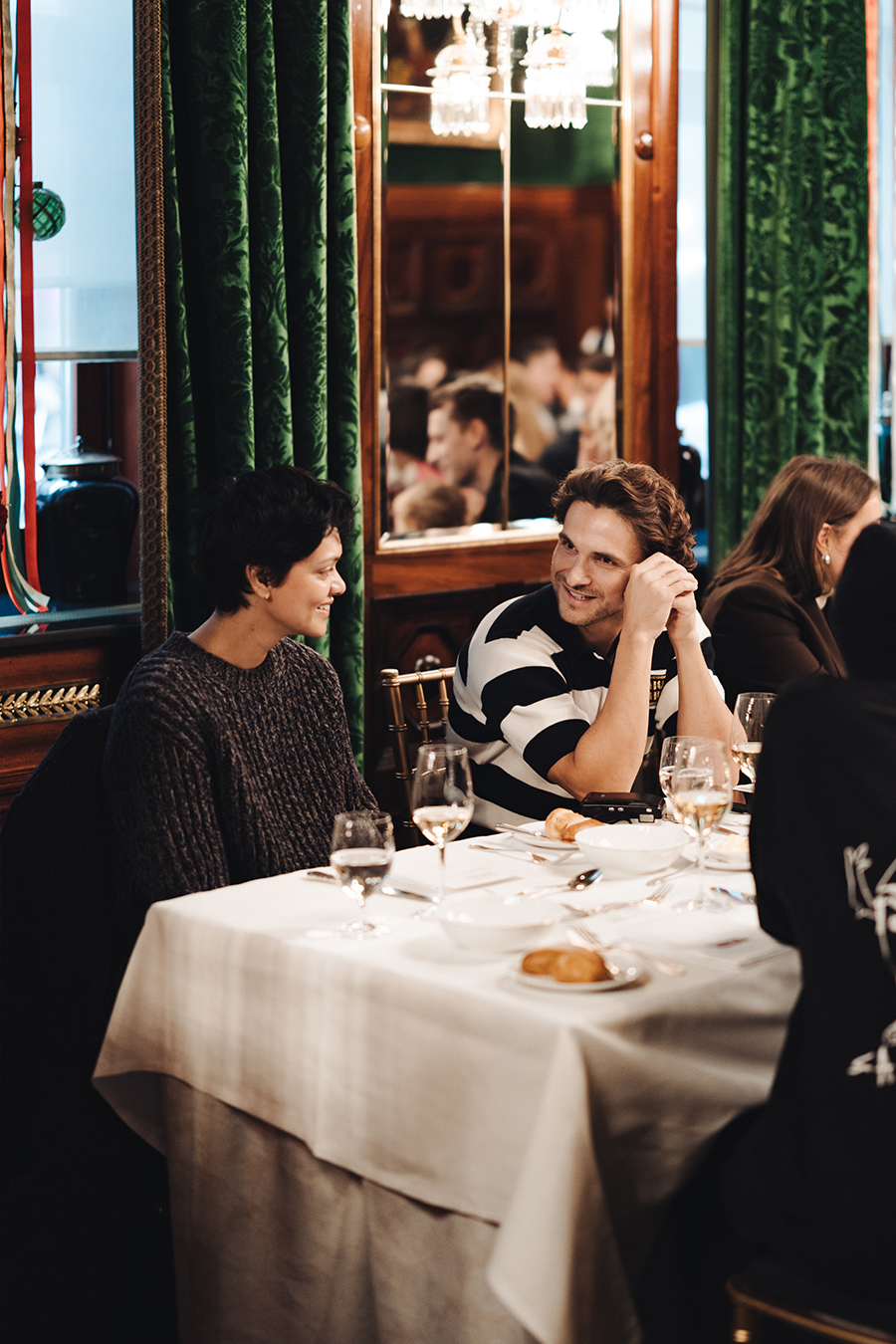
Zinnia Kumar, Mergim Shabani
The revelry continued to the next day with a refined lunch at the five-star Hotel Sacher, a bastion of Viennese elegance and luxury. Famous worldwide for its modernized ‘Sacher Torte’, adark chocolate glazed sponge cake with layers of apricot jam, the hotel pushing the traditional Austrian culinary heritage to the pinnacle.
Each moment of the celebration was crafted with care and attention to detail, reflective of the warmth and familiarity that are hallmarks of Mytheresa events. From the selection of the venues to the intricacies of the program, every element was a nod to the art of fine hosting.
This two-day fête by Mytheresa and Miu Miu stood as a testament to the power of collaboration and elevate the essence of celebration, leaving a mark on the hearts of those who were part of this special Viennese rendez-vous.
Madama Garden Hotel: A Tranquil Retreat in Venice

Madama Garden Hotel: A Tranquil Retreat in Venice
Madama Garden Hotel: A Tranquil Retreat in Venice
If you’re seeking a hidden gem in the heart of Venice, look no further than Madama Garden Hotel. My one-night stay at this charming 9 suites establishment part of the ancient Palazzo Antelmi was an absolute delight.
Upon entering my room, I was immediately struck by its spaciousness. The design was thoughtful, featuring a separate sleeping area from a cozy sitting space with a kitchenette. The highlight, undoubtedly, was the enchanting view of the canal and the picturesque Scuola della Misericordia. The decor exuded a contemporary flair, and the bathroom, entirely clad in dark marble, was stocked with luxurious products from the renowned Dyptique brand.


The hotel’s strategic location deserves special mention. A leisurely stroll took me to Venice’s major attractions, from the private collection at the Peggy Guggenheim Museum to delightful local restaurants. The staff, ever so courteous, not only welcomed me warmly but also provided invaluable recommendations on artistic points of interest, the ongoing exhibitions around the city and the open historical buildings including the stunning Palazzo Grimani.
Breakfast was a culinary delight. The spread offered a perfect balance between sweet and savory, featuring fresh and delectable choices. The dining area itself was a visual treat, adding to the overall enjoyment of the morning repast.
Madama Garden’s proximity to the city center was a blessing, providing easy access to all the main sites while maintaining a peaceful ambiance. The mornings were gently awakened by the distant sound of church bells – a serene start to the day.


The hotel’s small but meticulously cared-for internal garden was a pleasant surprise: part of the exclusive Wigwam Club Giardini Storici Venezia, a non-profit organisation to protect and spread the green culture and more specifically the understanding of Venetian gardens. Opening the little gate felt like stepping into a tranquil haven where one could relax, linger, and even enjoy a meal in the lovely courtyard station.
A charming addition to the experience was the small dock accessible directly from the garden. It allowed for a unique arrival or departure experience by small boat – a distinctive touch that set Madama Garden apart.
In conclusion, my stay at Madama Garden Hotel was nothing short of exceptional. It offered a serene escape from the tourist hustle and bustle while remaining conveniently close to all the city’s attractions. I can’t wait to return to this delightful oasis in Venice, a true home away from home.

Text: Silvia Pescia
Givenchy Sfilate: Chronicles of Elegance
Givenchy Sfilate
Chronicles of Elegance

“GIVENCHY SFILATE”, 2023

HUBERT DE GIVENCHY – A/W 1957-58 HAUTE COUTURE
The world of fashion is gearing up to welcome a new chapter of timeless elegance with the release of the book “Givenchy Sfilate”. This extraordinary monograph offers an unprecedented immersion into the haute couture and ready-to-wear collections of the renowned Maison, from its debut in 1952 to the present day.
Curated by fashion experts Alexandre Samson and Anders Christian Madsen, the volume opens with a fascinating historical contribution that introduces fashion enthusiasts to the vision of the brand’s founder Hubert de Givenchy, who always asserted that “the shortest path to elegance is simplicity”, and this mantra continues to permeate every page of the book.

JOHN GALLIANO – A/W 1996-97 HAUTE COUTURE

ALEXANDER McQUEEN – S/S 1997 HAUTE COUTURE
Organized chronologically, the 180 collections presented in the book narrate the captivating story of the Maison, ushering in each new era with a brief summary and the biographies of the creatives who shaped Givenchy’s aesthetic. From Hubert de Givenchy’s early steps to the creative direction of talents like John Galliano, Alexander McQueen, Julien McDonald, Riccardo Tisci, Clare Waight Keller, to the current vision of Matthew M. Williams, the book offers a timeless journey through seven decades of iconic fashion house.
Accompanying Individual collections are some short texts that unveil inspirations, highlights, and details behind each created masterpiece. With over 1200 carefully selected runway photos, readers have the precious opportunity to immerse themselves in the visual mastery that has made Givenchy a benchmark in high fashion. The book also features interviews and quotes from the designers who have shaped the brand over the years. From the words of Hubert de Givenchy, who embodied effortless elegance, to the current philosophy of Matthew M. Williams, seeing fashion as an expression of personality, each creative director has contributed to defining Givenchy’s distinctive identity.

CLARE WAIGHT-KELLER – S/S 2018 HAUTE COUTURE

MATTHEW M. WILLIAMS – A/W 2021 READY-TO-WEAR
“Givenchy Sfilate” is not just a monograph; it is an opportunity to explore the creative evolution of the Maison and the artists who have guided it through successes, challenges, and innovations. As Alexandre Samson emphasizes, the book attests to an extraordinary level of inventiveness and luxury, maintaining a unique balance between commercial proposals and spectacularism.
In a digital age where fashion evolves rapidly, “Givenchy Sfilate” stands as a tangible testament to the artistic mastery that has withstood the test of time. This book is not only a tribute to past collections, but also an inspiration for future generations – an authentic bible for fashion enthusiasts who wish to trace the trajectories of an icon that has defied time. With the heart of Givenchy beating in tune with the times, this book, available from the 17th November, promises to be an indulgent read for all those who appreciate the timeless art and elegance of fashion.
Text: Daniele Tancredi
Where Rebellion Meets Luxury
Where Rebellion
Meets Luxury
Zadig & Voltaire Unveils its Lifestyle Capsule Collection Voltaire Vice

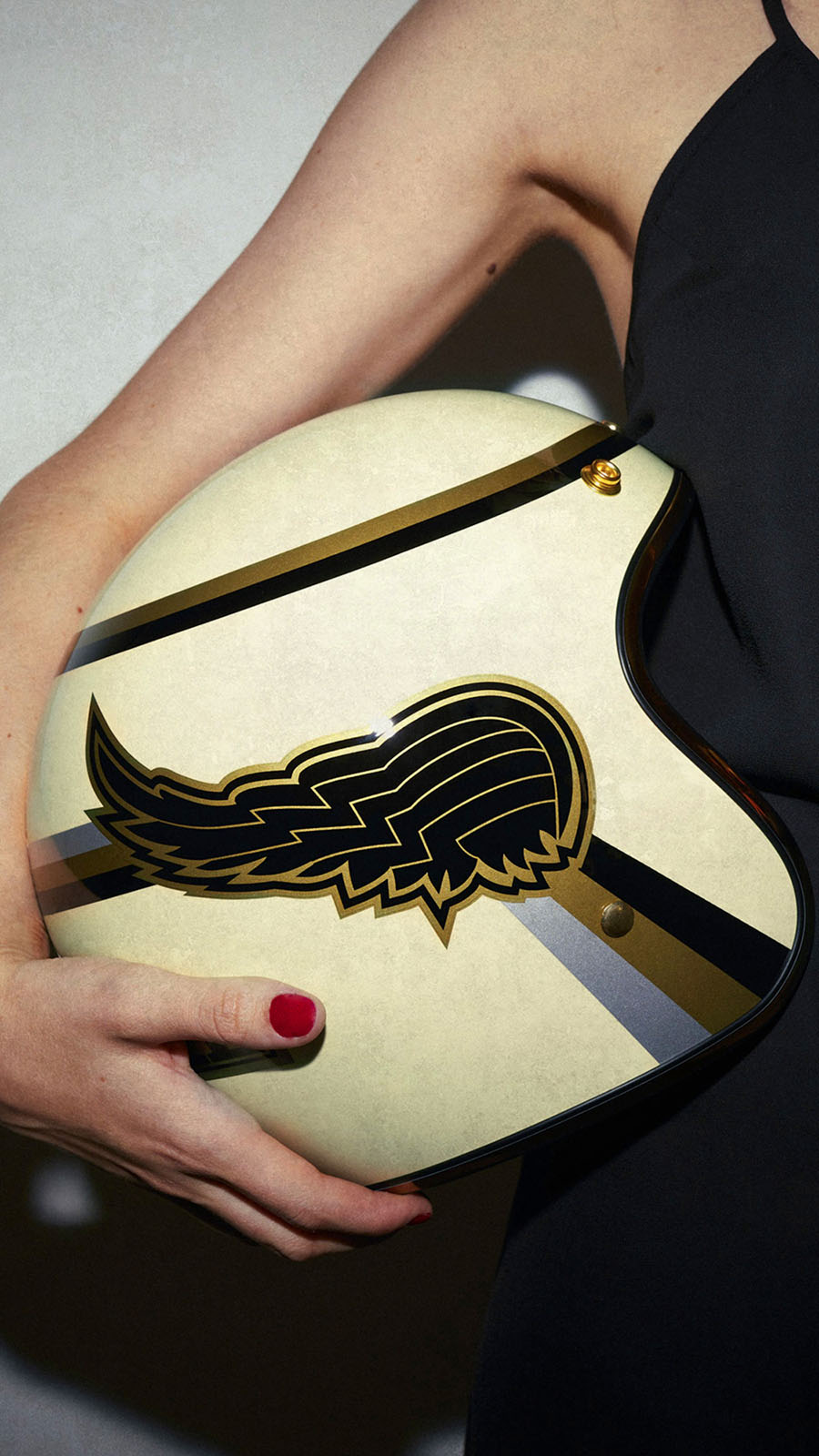
As an avid advocator of “effortless luxury”, Paris-based fashion house Zadig & Voltaire champions achievable fashion inspiration in chic style. Since its inception, the brand rejects the elitist attitude and distant posture prevalent in the contemporary fashion world, establishing a proximity with its customers through rebellious and avant-garde design.
Not promoting their core value only in the realm of fashion, Zadig & Voltaire once again pushes the boundaries and extends its tentacles to the lifestyle sector. With its latest lifestyle capsule collection: Voltaire Vice, the brand turns everyday objects into desirable fashion accessories. The collection represents a distinctive uniqueness, shedding new lights on how we perceive these quotidian objects: Whether superficially practical or addictively superfluous, they are all reinterpreting art and style in their own way.
Celebrating an unconventional rebellion against the ordinary, the capsule collection draws inspiration from the free-spirited ethos of the label – a testament to the raw, unapologetic energy, which has defined Zadig & Voltaire since its foundation. Choosing black and gold as key tone, the collection blends the rock ‘n’ roll rebellion and understated luxury perfectly.
Called “Matches Made in Heaven”, the black match box and its accompanying refined lighter, golden lighter case and ashtray with corrugated silhouette catches the eyeballs instantly. Considered the centerpiece of the collection, they encapsulate the spirit of modern maverick. With the defiant motto “Je m’en fous” (French slang for “I don’t give a damn”) printed around the edges of the match box, the rebellious energy is fully embodied.


Famous for its leather design, objects in leathers are omnipresent in the capsule. From hair bobbles to gloves and bracelets, the collection spruces its customers up with leatherware from head to fingertips. An adorable charm named “Happy Devil Key Ring” is also on the list. Made 100% by calfskin, the cute little devil adds a tincture of playfulness to the collection’s chic and sleek style. Other interesting pieces include a set of luxurious looking poker cards – printing all in black, silver and gold, a set of rock ‘n’ roll dice game set with gold-tone dice and leather game mat, a golden bottle opener in the shape of an angel’s wings – echoing the label’s eternal winged emblem, and the helmets created in collaboration with Marco Helmets, adorned also with wings motifs.
Much more than a one-time drop, the Voltaire Vice capsule collection is considered an extension of Zadig & Voltaire’s desire to the field of expression, while merging the art of lifestyle and fashion. All in all, it is an invitation to us all to celebrate the beauty in simplicity, and the extraordinary in the everyday.
The Voltaire Vice lifestyle capsule collection is now out worldwide on Zadig & Voltaire’s official website .
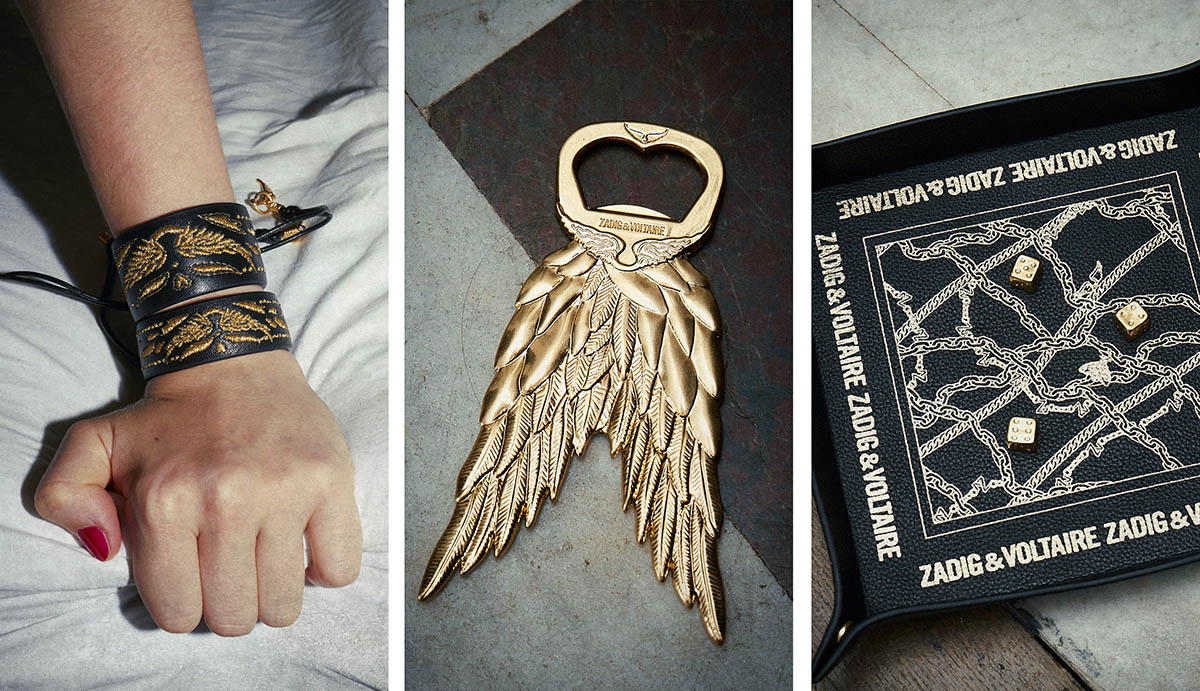
Text: Yves Tsou
Rabanne and Mytheresa Together for Their Second Capsule Collection
Rabanne and Mytheresa Together for Their Second Capsule Collection
With the inspiration of the special friendship between Paco Rabanne and Salvador Dalí
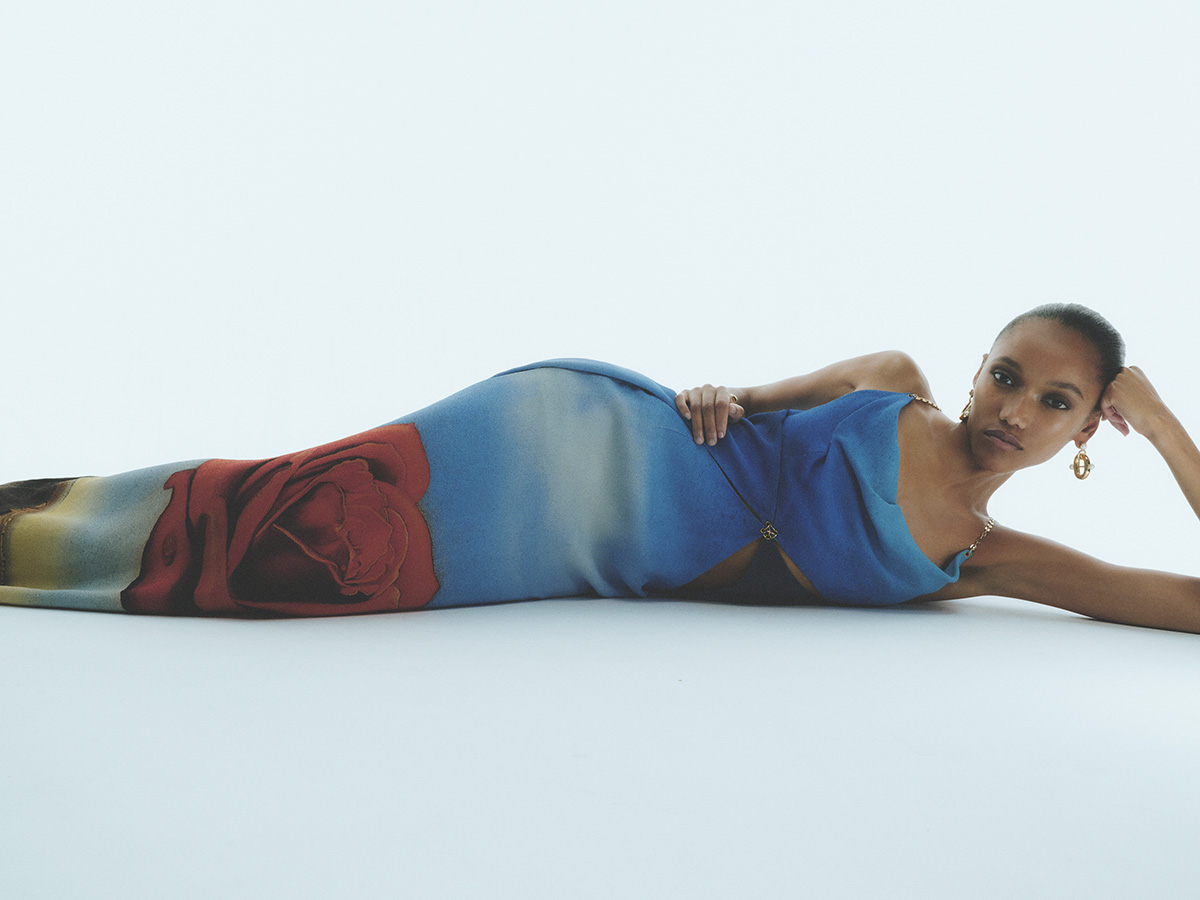
Dress inspired by Salvador Dalí’s painting The Meditative Rose (1958)
The luxury online retailer and the Parisian Fashion House are launching today their second capsule. The collection can count on iconic Rabanne’s marks: unconventional materials such as chain-link dresses and metal-mesh accessories, avant-garde symbols of the brand since the earliest collection in the 70s.
But the Creative Director Julien Dossena, inspired by very special friendship between Paco Rabanne and Salvador Dalí and thanks to Fundació Gala-Salvador Dalí, picked also two paintings from the spanish artist and brought them to a total new dimension, gently wrapping the bodies and moving on panel dresses and slight silhouettes.
To celebrate this launch, Rabanne and Mytheresa invited their guests for a two-days trip absorbed in Dalí surrealist universe, discovering first his Theatre & Museum in Figueres, followed by an intimate dinner at the renewed Michelin-starred Castell Peralada Restaurant. The guest then visited his private house in Port Lligat, an isolated fisherman’s hut he built and adjusted in over 40 years, to become his own little cave and studio, where he lived till 1982 when his beloved wife Gala passed away and still full of a multitude of objects and memoires belonging to both of them.
The exclusive Rabanne x Mytheresa capsule collection will be available globally on Mytheresa.com from today within a dedicated editorial story directed by Mytheresa Chief Creative Officer Julian Paul and shot by photographer Michele Di Dio, featuring model Ashanti Mildreth.
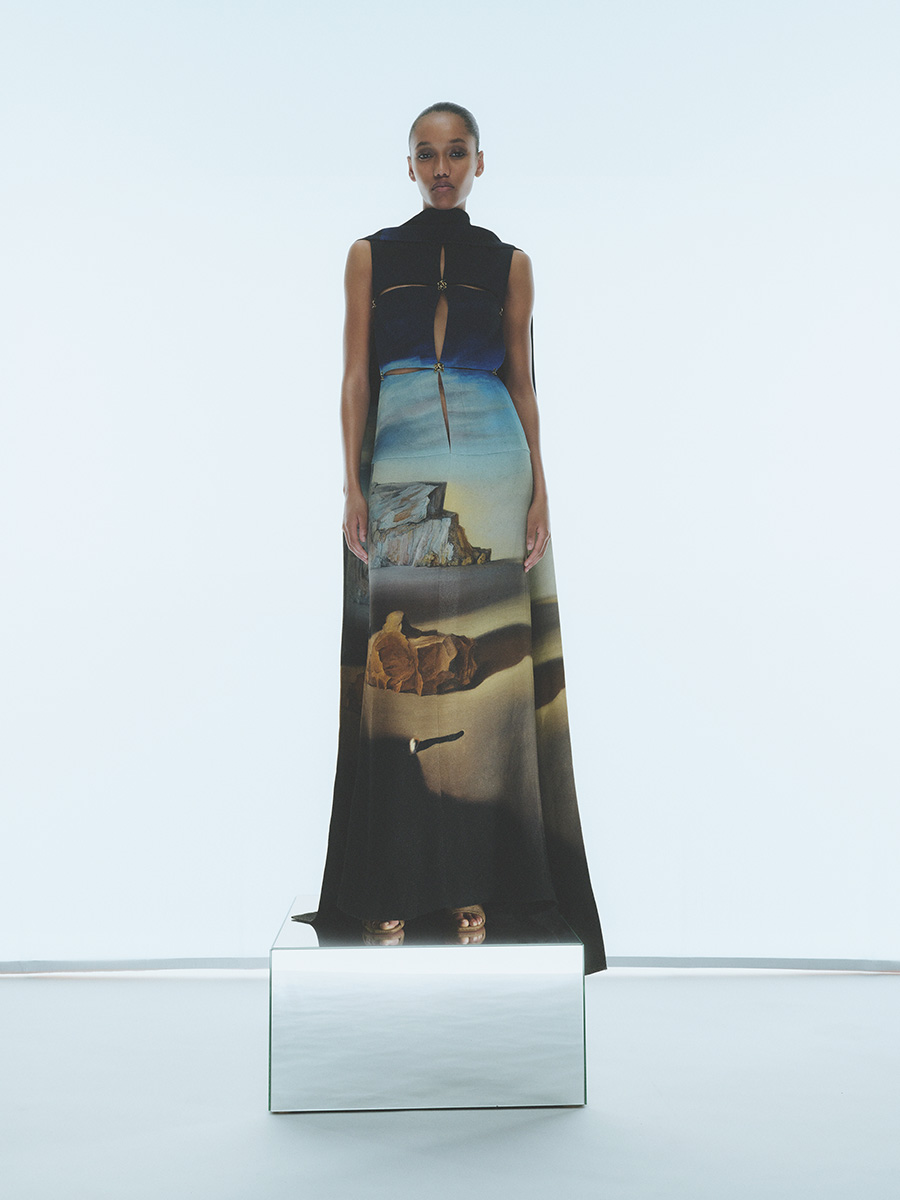
Dress inspired by Salvador Dalí’s painting The Shades of Night Descending (1931)
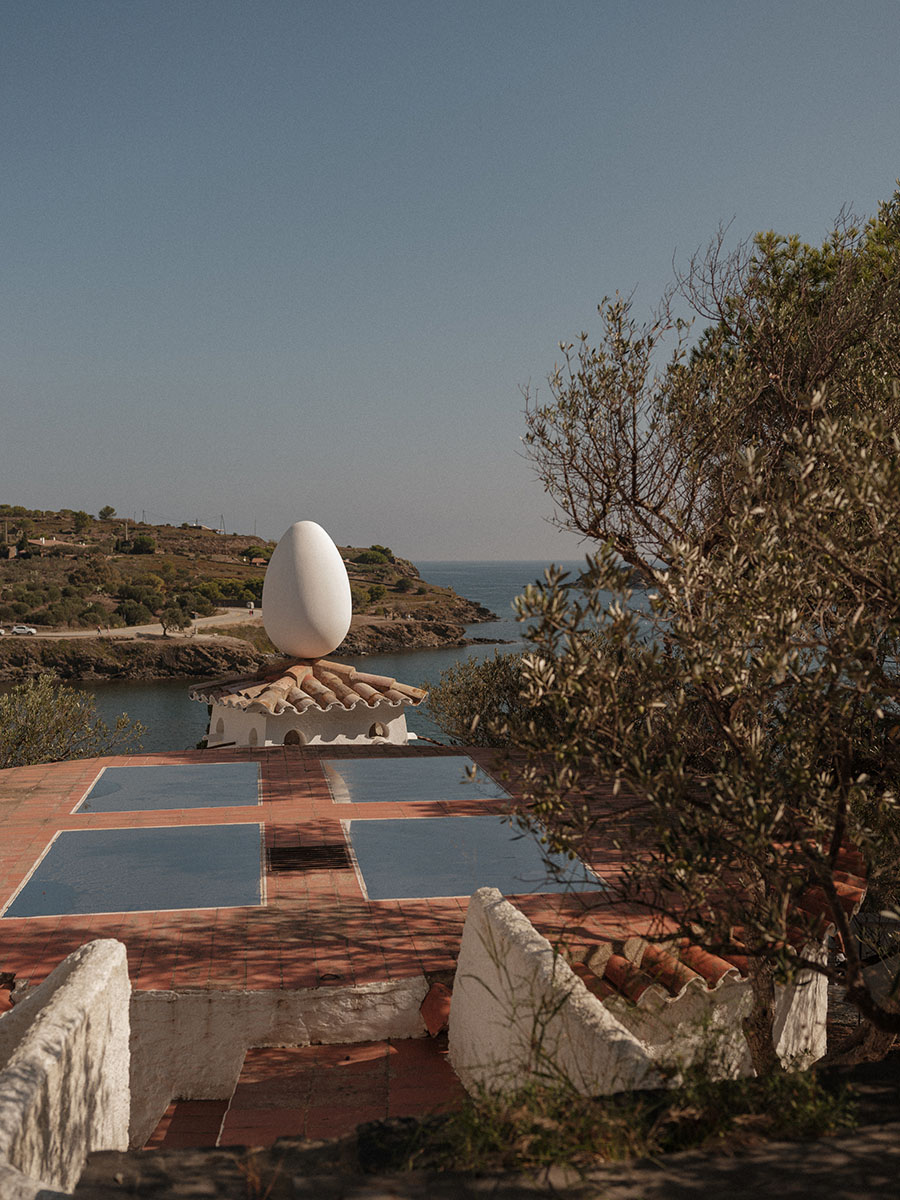
Port Lligat
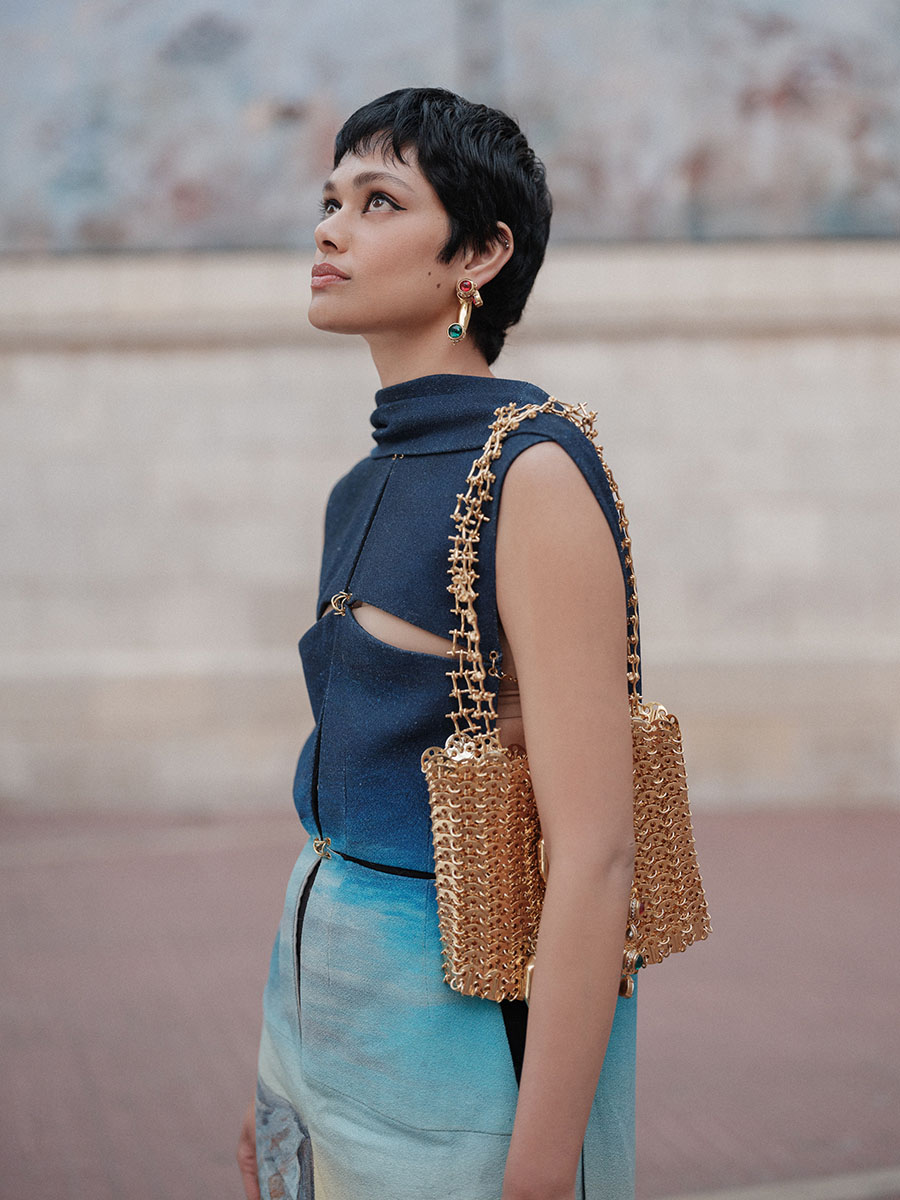
Zinnia Kumar
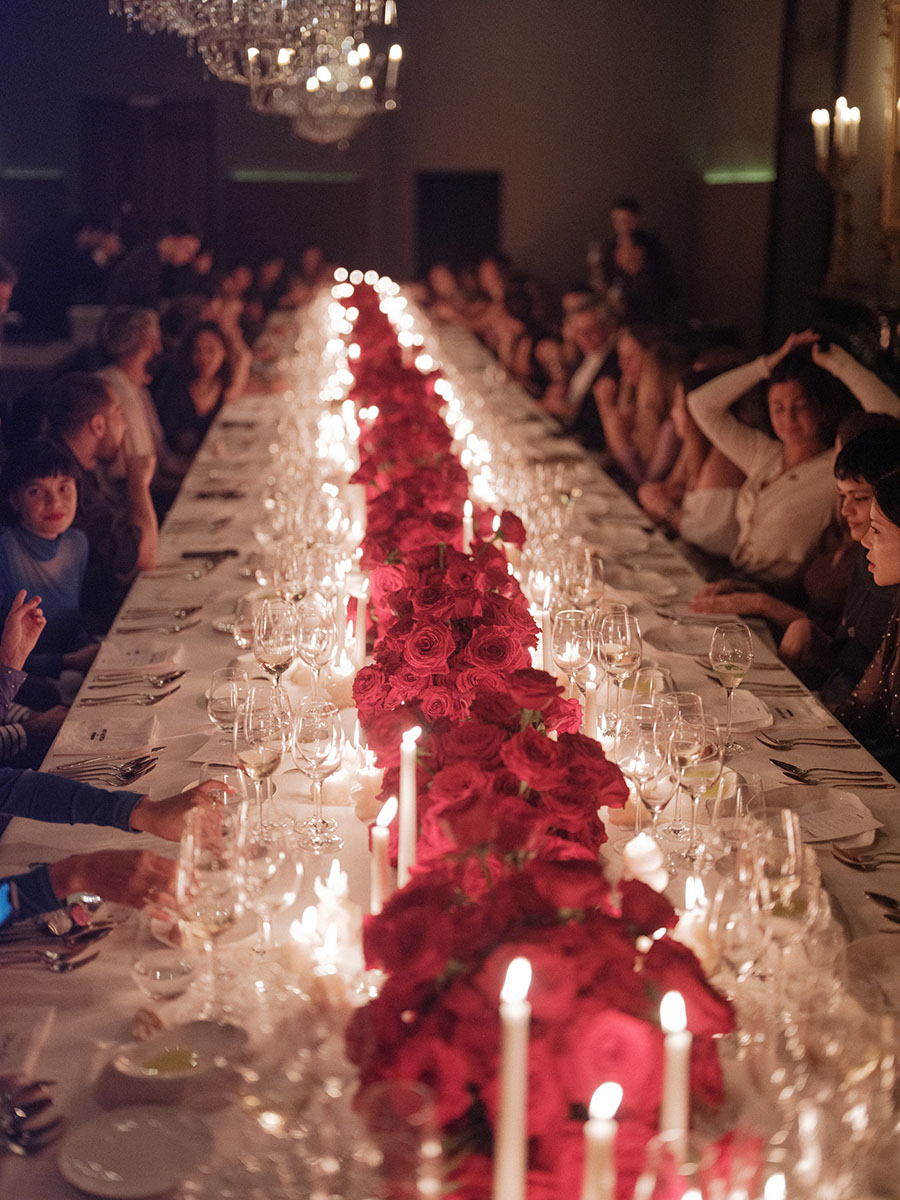
Intimate dinner at Castell Peralada Restaurant
Text: Silvia Pescia
Becoming Landscape
Becoming Landscape
Reflecting the Relevance and Meaning of the Landscape Through Art Film

The second edition of the St. Moritz Art Film Festival (SMAFF), directed by Stefano Rabolli Pansera, has rung down its curtain on Sunday 3 September. Took place in the Swiss town of the same name, which has much in common with the theme of the competition: “Becoming Landscape”.
With the given title, competing artists and directors were therefore asked to reflect on the relevance and meaning of the landscape today. 57 films competing between digital experiments, historical perspectives, philosophical and anthropological reflections which revealed, as declared by the creative director himself, not only technical complexity but also depth and poetic sensitivity, often told in first person by the directors present in the room, mediated or interviewed by colleagues and critics.
Among these is Lydia Ourhamane’s work Tassili, which the director brought, a non-local crew to the desert between Algeria and Libya for the first time. They went on a physical and spiritual journey, which lasted two weeks, in a normally and voluntarily inhospitable nature, preserved from tourism and the risk of deterioration.
Moving camera on a long walk in a pristine valley with no human interaction and no conversation, the spectators observe and reflect, gets lost and finds themselves. They probably relive the same intense experience as those who worked on the production of this film, who declared, upon returning, of not knowing how to describe the emotions and the passage of time on that massive and mountainous plateau in the Sahara Desert.

Tassili by Lydia Ourhamane

Karnaval by Leah Gordon
Kanaval by Leah Gordon reflects on Haiti’s discovery attributed to Christopher Columbus, on the condition of slaves before and after the French colonization and on carnival as an integral part of the Haitian identity. The identity was once deprived from the Haitian before returning to their possession at a later time, retaining some elements of European culture, in search of a new post-revolution identity.
Matteo Parisini tells us about the universe of Luigi Ghirri with his work Infinito, the Italy of the 70s, consumerism, historical quotes and artistic contaminations. He starts from the architecture of his territories and ends at metaphysical and suspended landscapes. The sky as the great and final protagonist of his works: becoming landscape par excellence.
Last but not least is the experimentation in the digital field, together with the support of artificial intelligence and the use of elements borrowed from the gaming world. The visualization of subjects through the eyes of a soldier in “Call of Duty” mode, human simulation through the characters of “The Sims” and the possibility of witnessing the same scene from three different points of view thanks to a sophisticated control of cutting-edge technology as illustrated in Theta directed by Lawrence Lek and winner of the Best Film Award: an accident, a car went off the road and got stuck in the woods at night.
Three different active elements on the scene: the car, the object, still turned on and still in a nature that incorporates it. The human, having got out of the vehicle, an emotional and psychological subject, lives and waits helplessly for aid. A fox, a natural and external subject arrives, observes and moves around the car and the person, and then returns to the woods, to its nature habitat.

Theta by Lawrence Lek
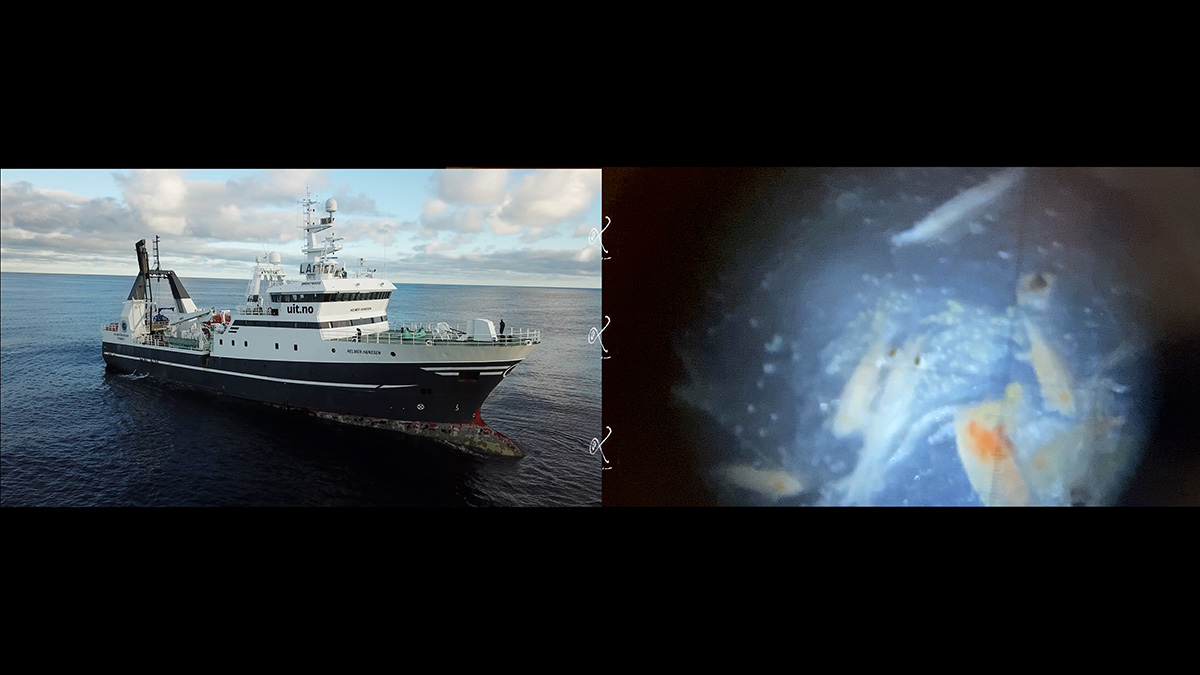
Warp by Raffaella Naldi Rossano
Among the winners is also Warp by Raffaella Naldi Rossano, who snatched the Special Prize for Emerging Artist. According to the jury, “the film transports the viewer through various narratives and temporal planes, producing a surprising effect and an unconventional audiovisual panorama” and “offers a frame of reference for reflecting on contemporary issues linked to the Mediterranean, to the relationships with the preservation of the territory marine and ecosystems, as well as the consequences of climate change”
“Love at First Sight” is the name of the prize from the exclusive partner, Kulm Hotel St. Moritz, awarded to Laguna Negra by the Peruvian director Felipe Esparza Pérez. “Sophisticated blend of documentary and fiction. Its meditative rhythm produces a sense of sacredness, in line with the indigenous traditions explored in the film.”
The St. Moritz Art Film Festival, in its second edition, promises to become a regular event and we can only continue to support it.
Text: Silvia Pescia
The Statue of Ambiguity
Simple, structural and somewhat sophisticated. London-based designer Syuan Jhen Lin showcased her latest project “The Statue of Ambiguity” on August 3rd, 2023 at London’s Finsbury Park during the gig of hip-hop singer Refound and DJ Joy.
Born in Taiwan, Syuan Jhen Lin relocated to London to pursue her fashion studies at London College of Fashion after winning a design competition of wedding gowns. Hailing from Asia and living in Europe, her design is an eclectic fusion of the oriental and occidental culture. She specializes in pattern-making and garment construction, and is proficient at converting her avant-garde vision into enchanting storytelling.


Titled “The Statue of Ambiguity”, Syuan Jhen’s latest collection is a reflection on how society shapes our predetermined images of behaviors, or the so-called stereotypes, on others. These stereotypes tell us how to perceive a person by the way they look, the way they dress or the way they carry themselves; and oftentimes, lead to categorizing others in a somewhat polarizing opposite.
However, things are not always how they seem to be from the surface. We tend to forget that we are all independent units that have multiple façades. Our characteristics can be viewed differently by different people from different angles. The world is non-binary, there is actually a large area in between called the ambiguity. That state of ambiguity is the element which makes our stories more lively and multi-dimensional.
Inspired by the ambiguity in our personality, Syuan Jhen wants to manifest her theory by playing with the texture and pattern in her design. Considering clothing a soft sculpture attached to the human body, she blends the elements from both menswear and womenswear to create the unique silhouettes that best express her vision. Throughout this experimentation, she wants to challenge the duality of traditional garment and create something neutral for everyone.
The experiment seems pretty successful. The juxtaposition of different elements makes her design extremely interesting. Just like our multi-faceted personalities, the shape and form of her design are not one-dimensional. It seems to be a normal top from the side; however, it becomes an undulating structure while seeing it from the front. The same concept applies to the trousers and the hat, looking plain from the front while being a sculptural form from different angles.




Currently, Syuan Jhen is preparing for the launch of her own brand. With her past experience in bridal wear, evening gown and ready-to-wear design, she wants to use her garment to challenge the societal norms and promote a more inclusive gender perspective. “Fashion wields the power to influence ideas and disrupt established paradigms.” She said, believing this concept to be innovative and impactful enough to inspire transformation in our society. The future of our society is unknown, so is hers. But we believe that with these proactive visions, we could create a more inclusive, diverse and welcoming community for those who are in their state of ambiguity.
Photography: London Nanzi 倫敦男子日常 (@london.nanzhi)
Fashion: Syuan Jhen Lin (@syuan_style)
Models: Refound (@refound__), Joy Shin (@zzbluee)
Text: Yves Tsou
